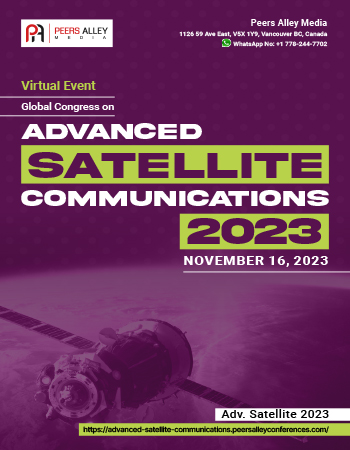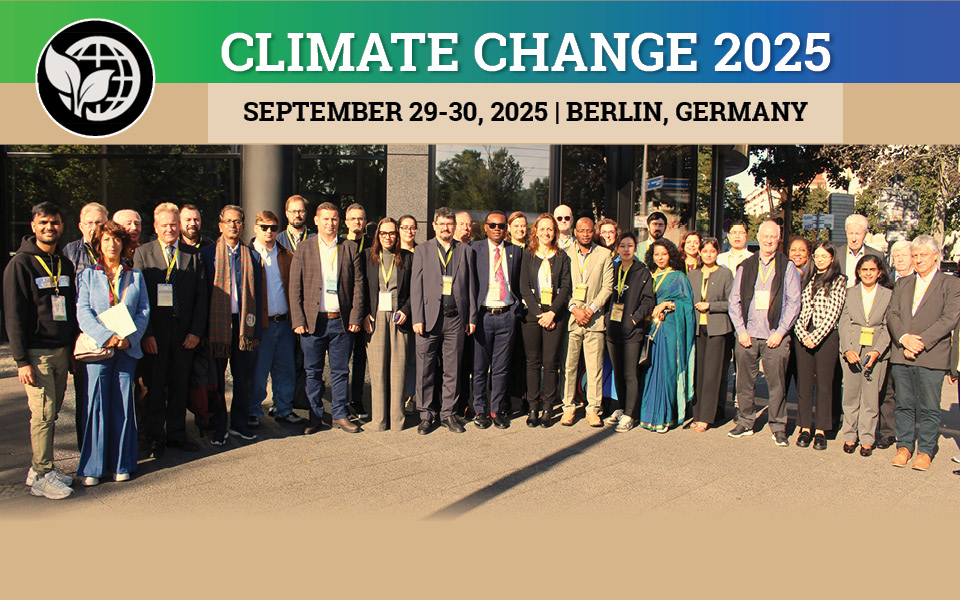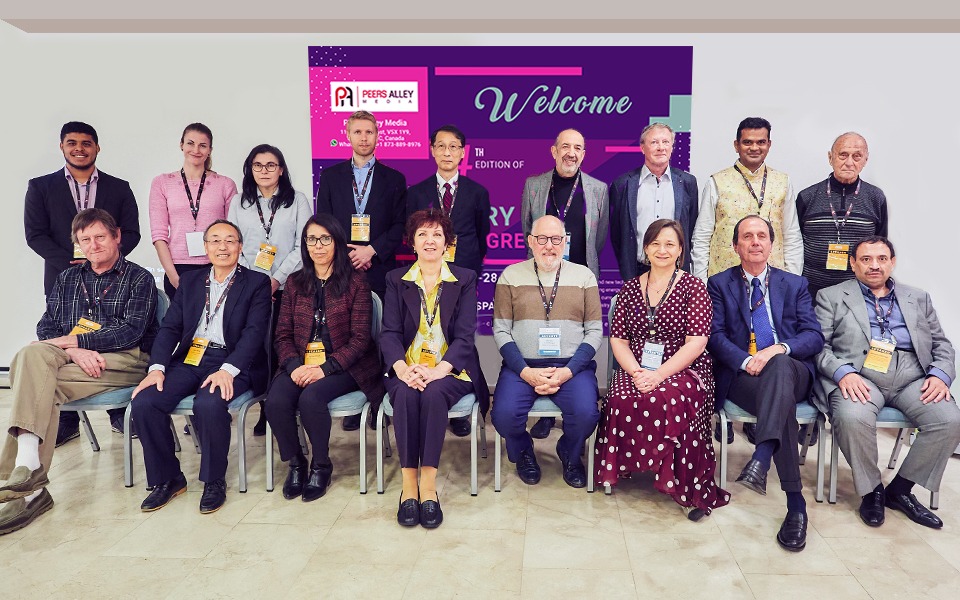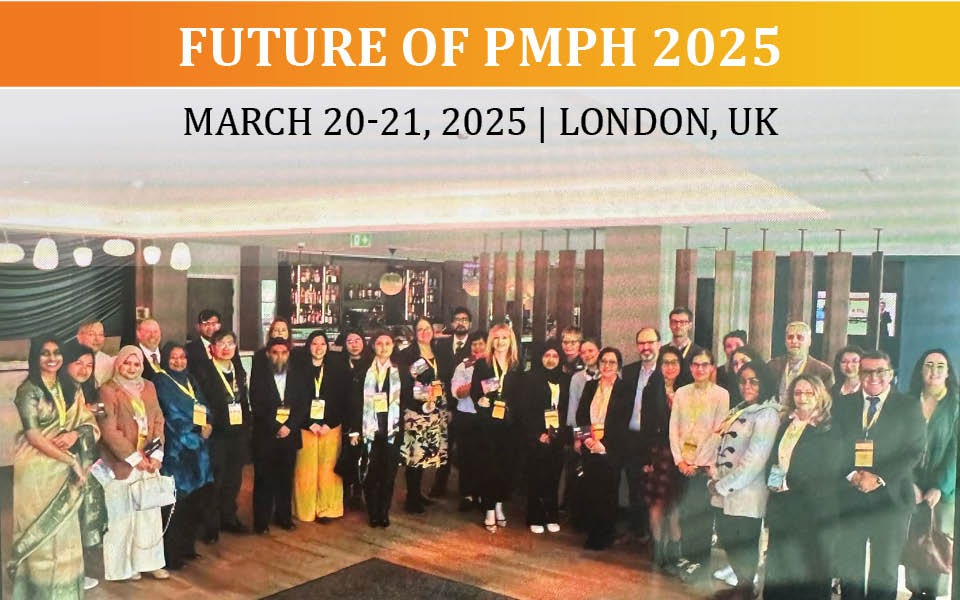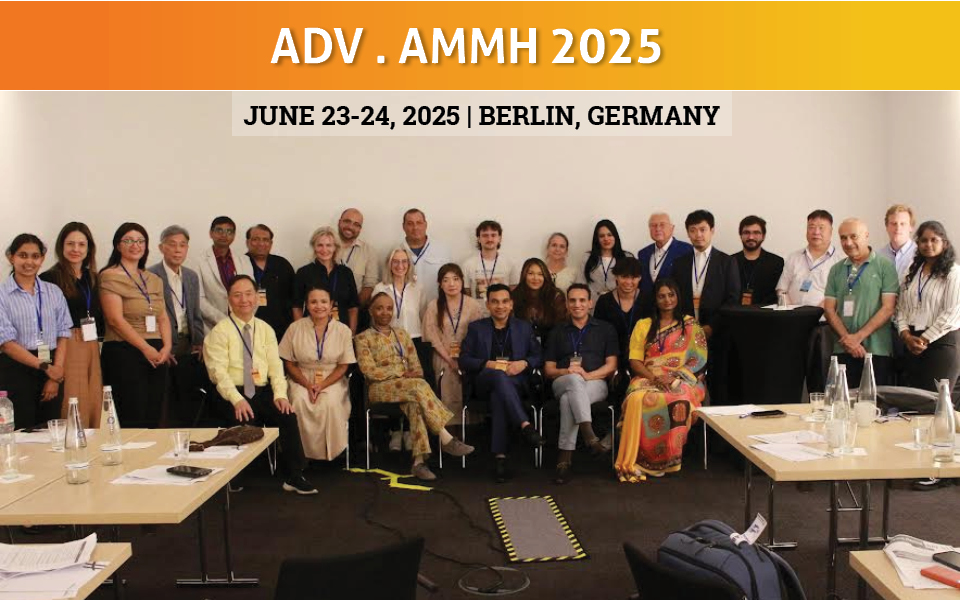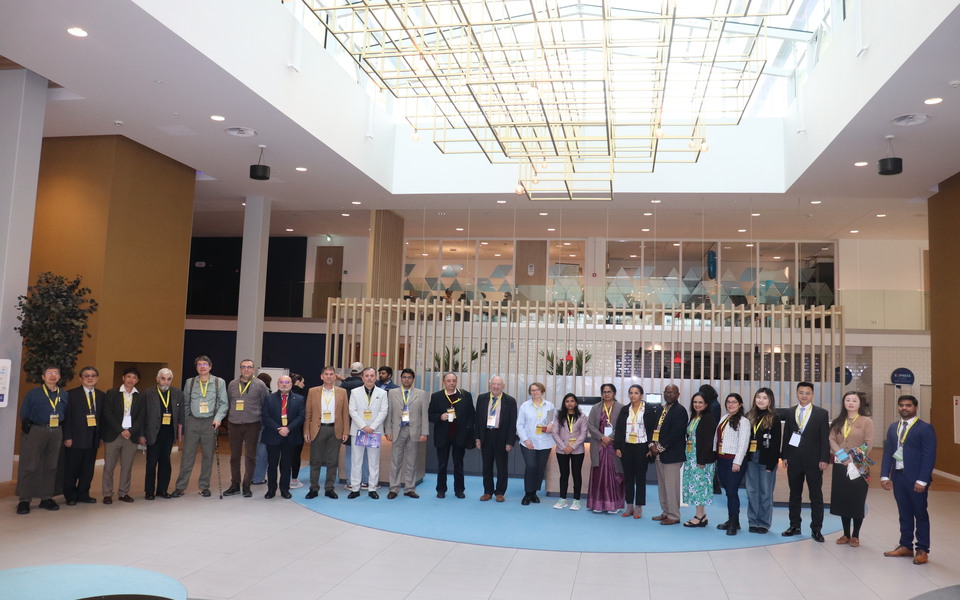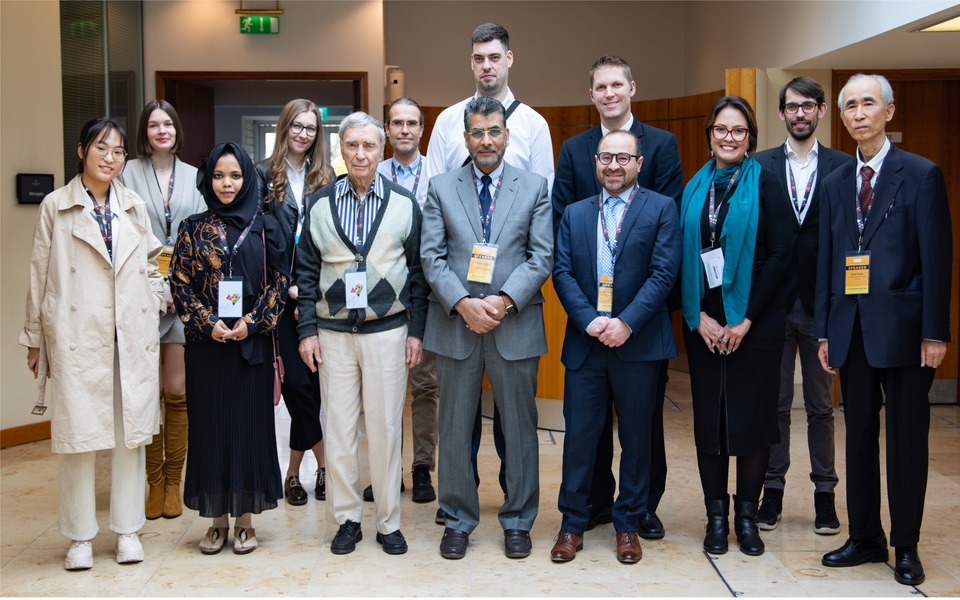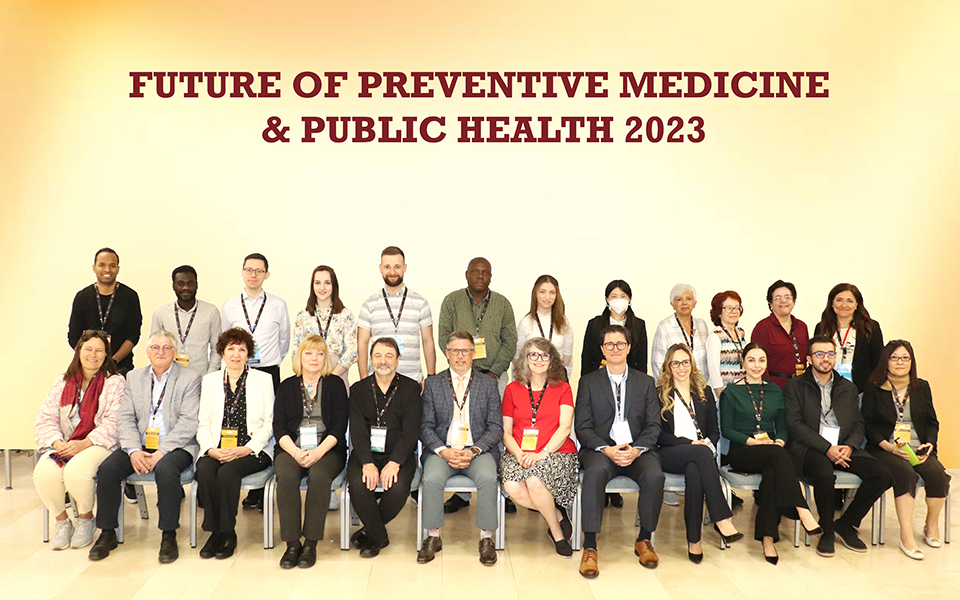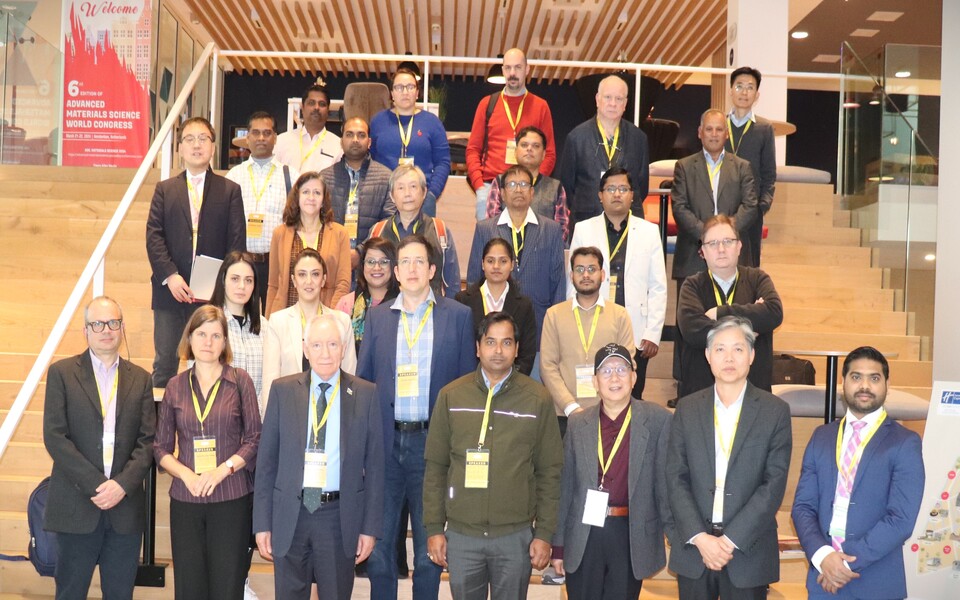
Nano Intellects 2025
Peers Alley Media,Canada

Primary goal of attending an international conference is to present a paper to the experts and influencers. It gives you a platform to exchange your interest-related thoughts, paving the way for possible future collaborations.

Use this platform to build connections with an elite group of wise men and women to enhance your intellect. Young entrepreneurs, this is a great platform to connect with your peers.

Knowledge is Power. Knowledge teaches skills. Skills define excellence. Use this platform to become cognizant of your interest area to achieve excellence in your domain.

Attending a conference give you opportunity to get your abstract or paper published in conference proceedings

Meet and greet a myriad of industry professionals and academia experts with common interest. Every meal will be an opportunity to meet and interact with fellow researchers, attendees and experts.

Expand your professional competency and learn useful tips and tricks of your industry in our skill-building workshops.

Explore insights on recent advancements, new equipment, new techniques, and unpublished data, learn from thought-leaders and get to network with a great line up of speakers.

Our exhibits floor offers the attendees with a dynamic display of the latest products with cutting-edge technology.

Investing in you is the best investment. Peers Alley conferences give the patrons with a feeling of the serendipity of real learning, skill development in strategic workshops, networking and start-up opportunities, thus, is value for money.

Attending the conference gives you much needed break from your regular duties. It also allows you to explore new cities, culture and meet new people. You will feel energized and rejuvenated to return to the university and continue with the job after attending the conference.
Conferences are vital forum for academic researchers and business leaders. "It involves multiple presentations, interactive breakout sessions, hands-on product demonstrations and unrivalled networking opportunities".
We have invited some of the world's most sought-after keynote speakers, experts, brand ambassadors, and industry leaders to share their thoughts and ideas with our conference guests.
Register Now
Satellite global market has the potential to significantly benefit future mankind by improving connectivity, enabling better environmental and public safety decision-making, and facilitating scientific research and exploration.
Objectives:
• Keep pace with advancements in satellite technology
• Understand the benefits and challenges of implementing new technologies
• Discuss emerging applications for satellite communications, such as autonomous vehicles and smart cities
• To address the importance of security and resilience in satellite communications, and explore strategies for maintaining the security of satellite networks.
• To identify opportunities to improve sustainability in satellite communications, through the use of renewable energy and other sustainable practices.
• Foster collaboration and information sharing among experts and stakeholders in the field
• Promote innovation and forward-thinking solutions to the challenges facing the industry
-----------------------------------------------------------------------------
Satellite Proceedings 
Theme: Satellite Horizons: Navigating the Future of Connectivity
Sub-themes:

Dear Colleagues,
I am delighted to have this opportunity to extend a warm welcome on behalf of the Organising Committee of the 3rd Global Congress on Advanced Satellite Communications 2025 (Adv. Satellite 2025) which will be held on 30-31 October 2025 in Prague, Czech Republic. As part of the Global Congress on Advanced Satellite Communications series event will bring together distinguished scientists, distinguished researchers, research fellows, PhD students, industrial experts, from all industries, consulting firms, and academics of private and government sectors.
The aim and objectives of this Global Congress are to facilitate the exchange of ideas, showcase the latest research, and engage in discussions on emerging research topics in the fields of Satellite and Education, Space Missions, Mobile Satellite Communication Networks, Satellite Engineering, Wireless Satellite, and Broadcasting, as well as their novelty and applications.
The purpose and motif of this event strive to accomplish:
The Congress attracts many extraordinary and globally talented professionals in Science, Technology, Engineering, Mathematics, and Management in Advanced Satellite Communications. The 3rd Global Congress of Advanced Satellite Communications welcomes contributions from worldwide of this universe as keynote speakers, invited speakers, and delegates from academia, research, manufacturing, operations, and industries to share the knowledge, scientific studies, and research works produced by you and your team and as a panel to engage and discuss the needs of this world. Let's together shape the future of Advanced Satellite Communications.
Ravandran Muttiah
Congress Chair 2024
AIMST University, Malaysia

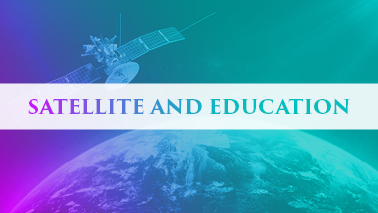
Satellites have risen in importance as a tool in education, serving both students and teachers an abundance of opportunities. The following are some applications for satellites in education:
Remote Learning: Satellites can give people access to excellent educational resources and material in remote locations where traditional teaching methods are not feasible. Students can receive a top-notch education without having to make physical travels thanks to this.
Scientific Study: Educational curricula might be enhanced by using scientific studies carried out with the assistance of satellites. By looking at satellite data, students can study topics including weather patterns, climate change, and environmental monitoring.
Space Education: Satellites make it possible to learn about space exploration and technology. The development, launch, and operation of satellites can be studied by students. They can learn about the various applications of satellites in the fields of communication, navigation, and earth observation.
Disaster Management: Satellites can help with both emergency response and disaster management. Students can investigate the ways in which satellite data monitors natural disasters and aids in recovery efforts.
Communication: Video conferencing and other forms of communication via satellites are useful for cooperating between colleges and institutions and for facilitating distance learning.
In the end, satellites have the ability to significantly improve educational standards and give students a wide range of study and field research opportunities.
Tags
Satellite Networking Conferences
Satellite Communications Meetings
Cloud Computing Conferences
Satellite Networking Conferences 2024
Remote Sensing Conferences
Satellite Conferences 2024 Europe
Satellite Conferences
Satellite Conferences 2024 Asia
Satellite Conferences 2024 Middle East
GIS Conferences

By creating a network of communication links between satellites, multi-satellite networks offer coverage over the whole planet. These kinds of networks are employed for many different purposes, such as internet communication, broadcasting, and remote sensing.
The following are the main components of satellite networking:
Satellite Constellations: By cooperating, satellite constellations offer a particular service or application. These constellations can be in low Earth orbit (LEO), medium Earth orbit (MEO), or geostationary orbit (GEO) to give coverage in particular parts of the planet.
Intersatellite Links: A constellation of satellites can communicate with one another thanks to intersatellite links, or ISLs. These links are essential for preserving community connectivity and are often created via radio-frequency or laser technology.
Ground Stations: Satellites in orbit are communicated with via ground stations. These stations, which may be found anywhere in the globe, are in charge of monitoring the satellites, gathering information, and communicating commands to them.
Gateway Stations: A gateway station is a ground station that receives satellite signals and distributes them to other ground stations. it typically operates in an area where satellite services are highly demanded
Network Management: The network management system of a satellite network guarantees uninterrupted data transmission and reception as well as the effective operation of the satellites. Software tools for controlling the network architecture, keeping an eye on satellite health, and assessing network performance make up a satellite monitoring system.
Wide-ranging applications and worldwide communication are made possible by satellite networking. Satellite networks will eventually be able to provide even more advanced, high-bandwidth services as technology develops.
Tags
GIS Conferences
Aerospace Engineering Conferences
Cloud Computing Conferences
Satellite Communications Meetings
Satellite Conferences 2024
Satellite Communications Conferences
Satellite Conferences 2024 Europe
Satellite Conferences 2024 Asia
Satellite Conferences 2024 Middle East
Satellite Conferences 2024 USA
Wireless Communications Conferences 2024
Satellite Networking Conferences 2024
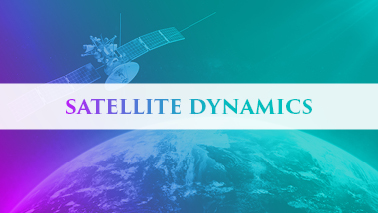
Satellite dynamics is the study of a satellite's motion as it orbits the Earth. Understanding satellite dynamics is essential to the design, operation, and control of satellites in space. Satellite dynamics includes the following aspects:
Orbital mechanics: The study of satellite motion falls under the umbrella of astrodynamics. In essence, it is the study of gravity, motion, and the relationship between the earth and the satellite.
Kepler's Laws: The planetary motion equations developed by Kepler describe how objects travel in orbit around the sun. These laws also apply to satellites in orbit around the Earth. An orbital satellite's period, semi-major axis, and eccentricity can be determined using Kepler's laws.
Perturbations: Small alterations in a satellite's velocity known as perturbations can be brought on by a variety of elements, including air drag, solar radiation pressure, and gravitational pull from neighbouring solar system entities. Over time, this disruption can cause the satellite's orbit to shift.
Attitude Dynamics: The study of a satellite's orbit in space is known as attitude dynamics. It also entails figuring out the torques and forces that affect a satellite, like aerodynamic force, magnetic gravitation, and gravity gradients.
Control Systems: In space, satellite orbit and attitude are managed by control systems. These systems include the magnetron torquer, reaction wheel, and propulsion system. The spacecraft's control system will maintain its orbit and attitude while enabling it to execute manoeuvres and make necessary orbital adjustments.
Satellite dynamics would require a deep understanding of mathematics, physics, and engineering. In order to construct and operate spacecraft with the highest levels of security, dependability, and efficiency, it is imperative that we deepen our understanding of satellite dynamics as the use of satellites rises.
Tags
Satellite Conferences
Satellite Conferences 2024 USA
Cloud Computing Conferences
Satellite Networking Conferences 2024
Wireless Communications Conferences 2024
Satellite Communications Conferences
Satellite Conferences 2024 Middle East
Remote Sensing Conferences
Satellite Communications Meetings
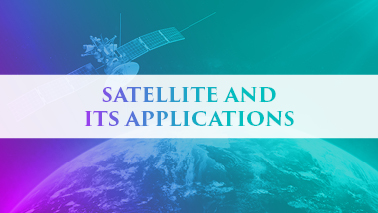
Satellites are utilized in a wide range of industries and applications, including scientific research, earth observation, communication, and navigation. Some significant applications for satellites are as follows:
Communication: Satellites are frequently used for communication since they offer voice, data, and video coverage all around the world. They are used to send web networks to remote areas and to transmit radio and television broadcasts.
Navigation: One kind of satellite used for worldwide navigation is the worldwide Positioning System (GPS), which is used for navigation in land-based, maritime, and aviation applications.
Earth Observation: Satellites are used to monitor and study various aspects of the Earth's environment, such as weather patterns, natural disasters, climate change, and land usage. They are also employed in forestry, agriculture, and oceanography.
Scientific Research: Satellites are used for logical research, with a focus on geology, astronomy, and the nearest planet group. They provide us a fresh viewpoint on the cosmos and our own planet.
Military & Defence: Satellites are used for surveillance, route identifying, social event analysis, and military and security applications. They supply vital situational awareness and aid with military operations.
Commercial Applications: A few of the many commercial uses for satellites are commercial spaceflight, remote sensing, imaging, and mapping.
All things considered, satellites are crucial to a wide range of businesses because they offer practical services and applications that have revolutionised the way people live, work, and travel the world. As technology develops, we should expect to see even more innovative and revolutionary applications for satellite technology.
Tags
Satellite Conferences 2024 USA
Remote Sensing Conferences
Satellite Conferences 2024
Satellite Conferences 2024 Europe
Satellite Communications Conferences 2024
Aerospace Engineering Conferences
Satellite Networking Conferences
Satellite Communications Conferences
Satellite Communications Meetings
Satellite Conferences 2024 Middle East
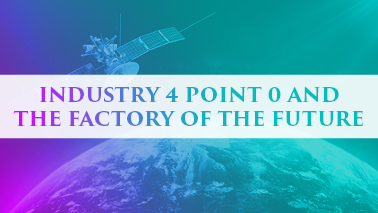
Industry 4.0 refers to the fourth modern insurgency, which is defined by the convergence of trend-setting technologies into contemporary assembly processes, including distributed computing, advanced mechanics, the Web of Things (IoT), artificial intelligence (AI), and man-made reasoning. Creating an environment that is more inexpensive, flexible, and productive for assembly is the goal of Industry 4.0. The idea of the "factory of the future" perfectly captures the highly automated, digitalized, and networked factories that Industry 4.0 envisions.
In the framework of Industry 4.0, the following are some essential components of the factory of the future:
Smart Factories: In these increasingly networked manufacturing environments, quality, waste, and production process optimisation are achieved by the application of artificial intelligence, big data analytics, and the Internet of Things (IoT).
Automation: In the factory of the future, risky or repetitive activities will be performed by robots and autonomous systems, freeing up human workers to concentrate on more complicated tasks requiring creativity and problem-solving abilities.
Predictive Maintenance: The processing plant that foreshadows future developments uses AI and information analysis to anticipate and prevent equipment failures, saving labour expenses and personal time.
Additive Manufacturing: 3D printing, also known as additive manufacturing, will be a key technology in the factory of the future because it will enable the on-demand production of intricate and tailored goods.
Augmented Reality: By giving workers real-time information and visual guidance during difficult tasks, augmented reality technologies are used in the factory of the future to decrease errors and increase productivity.
Sustainable Manufacturing: This production line illustrates the direction of future developments by highlighting long-term viability using renewable energy sources, and reducing waste and emissions through the application of cutting-edge technologies and cycles.
The factory of the future will use advanced technologies to create a more sustainable, efficient, and adaptable manufacturing environment. This will mark a major change in manufacturing practises as a whole. With Industry 4.0 developing further, we can expect to see even more revolutionary and game-changing technologies that will define the future of manufacturing.
Tags
Satellite Networking Conferences
Remote Sensing Conferences
Aerospace Engineering Conferences
Cloud Computing Conferences
Satellite Engineering Conferences
Satellite Networking Conferences 2024
Satellite Conferences 2024 Europe
Satellite Communications Meetings
Satellite Conferences 2024 Middle East
Satellite Conferences 2024 Asia
GIS Conferences
Satellite Conferences 2024
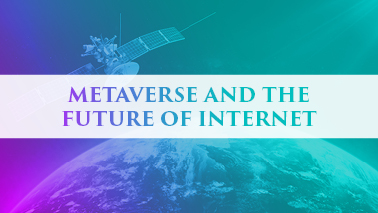
The metaverse is a virtual environment that allows people to collaborate with computers and other people in a highly intelligent and colourful setting. Although science fiction has made this idea popular, recent technological developments are making it more and more realistic in real life. The metaverse, in the opinion of many experts, will have a big influence on how the internet develops in the future and how humans use technology. The next development in the internet's evolution is thought to be the metaverse.
Some salient characteristics of the metaverse and their possible implications for the internet's future are as follows:
Immersive Experience: In the metaverse, users can engage in 3D interactions with digital objects and each other, creating a more engaging and interactive online experience.
Social Interaction: Using a common virtual area, the metaverse allows users to meet and communicate with people from all over the world in a way that is not possible with traditional web-based platforms.
Economic prospects: The metaverse offers a plethora of new economic prospects, including virtual currency, virtual goods, and virtual real estate. This has the potential to create a whole new industry full of innovators, engineers, and business visionaries.
Virtual Education and Training: By utilising the metaverse, students can have a more immersive and engaging virtual education and training experience.
Privacy and Security: The metaverse presents additional privacy and security issues as users exchange more private information and engage with digital objects in a more immersive setting. The security and privacy of users will be crucial to the metaverse's success.
The multiverse offers a more captivating, participatory, and immersive picture of the internet of the future. Even though technology is still in its infancy, the metaverse is expected to play an increasingly important role in how we engage with it and with each other in the years to come. Interest in and funding for the metaverse's advancement is rising.
Tags
Satellite Communications Conferences 2024
Satellite Conferences 2024 Asia
GIS Conferences
Satellite Conferences
Aerospace Engineering Conferences
Satellite Communications Meetings
Satellite Conferences 2024 Middle East
Satellite Communications Conferences
Satellite Networking Conferences
Satellite Conferences 2024 USA

We no longer use the internet to store, access, or exchange applications or data in the same way as before thanks to the integrated technologies of networking, storage, and cloud computing.
Cloud computing: This phrase describes the online provision of computer services, such as servers, storage, databases, software, and analytics. Rather than purchasing and managing their own infrastructure, individuals and groups can rent access to distributed computing resources from cloud partner cooperatives. These providers provide flexible and adaptive resource registration on a pay-as-you-go basis. Cloud computing offers numerous advantages, including cost savings, scalability, dependability, and accessibility from any location with an internet connection.
Networking: Networking is the process of connecting several computer systems and devices to share resources, data, and information. In the context of distributed computing, organising plays a fundamental role in connecting users to resources for distributed computing, enabling users to access data and applications from any location with an internet connection. Networking allows cloud service providers to enhance scalability and reliability by distributing computing resources across multiple data centres and locations.
Storage: The term "storage" refers to the organisation and preservation of data and information. Storage plays a crucial role in cloud infrastructure when it comes to cloud computing, allowing users to store and retrieve data from any place with an internet connection. The flexible and scalable object, file, and block storage options offered by cloud storage providers can be advantageous for a variety of applications and workloads.
Cloud computing, networking, and storage have completely changed the way we share, store, and access applications and data. Thanks to these technologies, companies and individuals can now leverage the power of computing resources and data analytics in a way that is more scalable, flexible, and economical. We can expect to see a great deal more inventive and remarkable use cases and applications in the years to come as these advancements continue to progress.
Tags
Wireless Communications Conferences 2024
Satellite Conferences 2024 Asia
Satellite Conferences
Satellite Communications Conferences 2024
Satellite Networking Conferences
Cloud Computing Conferences
Satellite Communications Conferences
Remote Sensing Conferences
Satellite Conferences 2024 Europe
Satellite Communications Meetings
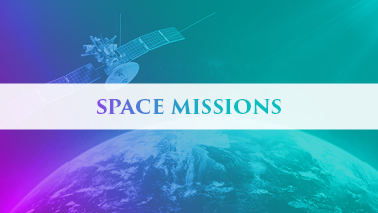
Space missions use satellites, rockets, tests, and various instruments to send probes and instruments beyond Earth's atmosphere, alluding to exploration and research into space. Space missions serve a variety of purposes, such as business research, military operations, human research, and logical analysis.
Here are a few space mission examples:
Apollo Missions: NASA conducted a series of manned spaceflights known as the Apollo missions between 1969 and 1972. These missions brought people back to Earth safely after they had successfully landed on the moon.
Voyager Missions: NASA launched two unmanned spacecraft, known as the Voyager missions, in 1977 with the goal of exploring the outer solar system and beyond. Priceless are the pictures and information that the Voyager spacecraft have taken of Jupiter, Saturn, Uranus, Neptune, and beyond.
The Hubble Space Telescope: NASA and the European Space Agency launched the massive space-based observatory known as the Hubble Space Telescope in 1990. The breathtaking images the telescope produced have helped scientists understand the universe better.
Mars Missions: Several space agencies, including NASA and the European Space Agency, have conducted several missions to Mars, such as the Mars Reconnaissance Orbiter and the Mars Rovers. Thanks to the invaluable data and images these missions have provided, scientists now have a better understanding of the climate, geology, and potential for life on Mars.
International Space Station: The low-Earth orbiting, habitable International Space Station (ISS) provides a platform for scientific research, technological development, and international collaboration. Management of the International Space Station (ISS) involves collaboration by the space agencies of the US, Russia, Europe, Japan, and Canada.
These are just a few examples of missions in rooms. We can expect to see even more innovative and fascinating space missions in the near future as space exploration and research continue to improve.
Tags
Satellite Communications Conferences 2024
Satellite Communications Meetings
Satellite Conferences
Satellite Engineering Conferences
Satellite Communications Conferences
Wireless Communications Conferences 2024
Satellite Conferences 2024 Europe
Satellite Conferences 2024 Asia
Satellite Networking Conferences
Aerospace Engineering Conferences
Remote Sensing Conferences
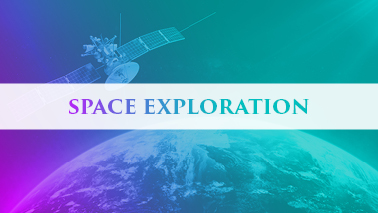
The term "space exploration" refers to the disclosure and exploration of space, including the study of regular and physical variations that exist outside of Earth's climate. Space exploration is the process of gathering data and information about space through the use of various technologies, including telescopes, spacecraft, and other instruments.
The following are some noteworthy accomplishments and current space exploration initiatives:
Moon Landing: In 1969, NASA's Apollo 11 mission enabled the safe landing of the first human on the Moon. Since then, several other successful manned and unmanned lunar missions have been carried out.
Exploration of Mars: Several successful missions to explore the Red Planet have included the Mars rovers, which have yielded invaluable data and images of the planet. according to NASA Humans will soon be sent to Mars.
Exploration of asteroids and comets: In 2020, NASA's OSIRIS-REx mission made a successful landing on the asteroid Bennu and collected a sample of its surface material for scientific purposes. Effectively landing on a comet in 2014 was the European Space Organization's Rosetta mission.
Space Telescopes: Projects like the Hubble Space Telescope and the James Webb Space Telescope, which is scheduled to launch in 2021, have improved our understanding of the universe by providing high-resolution images and studies of the properties of distant objects.
Commercial Spaceflight: To make space exploration and travel more accessible and rational, companies like SpaceX and Blue Beginning are developing commercial space equipment and launching frameworks.
Currently, we are learning more about the universe and how we fit into it thanks to space exploration.
Tags
GIS Conferences
Aerospace Engineering Conferences
Satellite Conferences 2024 Middle East
Satellite Conferences 2024 Asia
Satellite Communications Conferences
Satellite Engineering Conferences
Satellite Communications Conferences 2024
Satellite Networking Conferences 2024
Cloud Computing Conferences
Remote Sensing Conferences

Remote sensing satellites and geographic information systems (GIS) are two technologies that often collaborate to gather and analyze data about the Earth's surface and its characteristics.
Remote sensing satellites are orbiting platforms that utilize sensors to collect information about the Earth's surface from a distance. These sensors can be passive, such as cameras that detect visible light and infrared radiation, or active, like radar that emits and receives signals. By utilizing remote sensing satellites, data can be collected on various aspects of the Earth's surface, including land use, vegetation cover, atmospheric conditions, and more.
On the other hand, GIS is a methodology for organizing and analyzing spatial data. GIS has the capability to store, manipulate, and analyze different types of spatial data, including satellite imagery, maps, and other geospatial information. By utilizing GIS, patterns and relationships between different features on the Earth's surface can be analyzed and visualized.
By combining the technologies of GIS and remote sensing, it becomes possible to create detailed maps and models of the Earth's surface. These maps and models have a wide range of applications, including environmental monitoring, agriculture, urban planning, and natural resource management.
Environmental monitoring: Environmental monitoring involves using GIS and remote sensing to track changes in the environment, such as deforestation, changes in land use, and natural disasters.
Agriculture: In agriculture, remote sensing and GIS can be used to monitor crop development and health, as well as improve water management and fertilizer utilization.
Urban planning: GIS and remote sensing are useful tools for urban planning because they facilitate the planning of land use patterns, transit systems, population density, and urban growth and development.
Natural resource management: Natural resource management can be enhanced through the monitoring and management of resources like mineral deposits, water resources, and forests using GIS and remote sensing.
To sum up, the combination of remote sensing satellites and GIS technologies can be highly effective in collecting and analyzing spatial data related to the Earth's surface. By integrating these advancements, it is possible to create precise maps and models that can be utilized for various purposes such as environmental monitoring, agriculture, urban planning, and natural resource management.
Tags
Cloud Computing Conferences
Satellite Conferences 2024 Europe
Satellite Networking Conferences
GIS Conferences
Aerospace Engineering Conferences
Satellite Communications Conferences 2024
Satellite Networking Conferences 2024
Satellite Conferences
Remote Sensing Conferences
Satellite Conferences 2024 USA
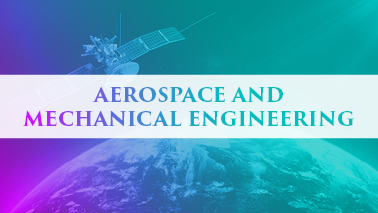
Aerospace engineering and mechanical engineering are two interconnected disciplines that revolve around the creation, enhancement, and upkeep of machines and devices.
Aerospace engineers manage the development, advancement, and manufacturing of aircraft, rockets, and related systems among a variety of other projects. This includes fields like instrumentation, materials science, propulsion systems, aerodynamics, and control systems. Their work includes everything from creating space exploration vehicles to creating commercial aircraft.
On the other hand, mechanical engineering focuses on the creation, development, and design of a wide array of mechanical devices, ranging from machines and robots to engines and power plants. Mechanical specialists employ principles from physics and materials science to conceive and construct these devices. They also delve into the study of control systems, thermodynamics, and mechanics.
Mechanical engineering and aerospace engineering share many similarities, as concepts and methodologies from one discipline can be applied to the other. For instance, aerodynamics plays a significant role in both mechanical and aerospace engineering, as does the utilization of instrumentation and control systems. Moreover, numerous mechanical engineers contribute to the design and development of aircraft engines, control systems, and other components within the aerospace industry.
In summary, aerospace and mechanical engineering are closely intertwined fields that encompass the design, enhancement, and production of machinery and devices. While mechanical engineering encompasses a broader range of mechanical devices, aerospace engineering specifically focuses on aircraft, spacecraft, and related systems. Nevertheless, there exists a considerable overlap between the two disciplines, with many concepts and methods being applicable in both.
Tags
Satellite Communications Meetings
Satellite Conferences 2024 Europe
Satellite Conferences 2024 Middle East
Satellite Conferences 2024
Satellite Conferences 2024 USA
Aerospace Engineering Conferences
Remote Sensing Conferences
Satellite Communications Conferences 2024
Satellite Conferences 2024 Asia
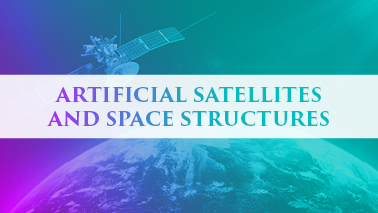
Artificial satellites and space structures play a vital role in the advancement of space exploration and technology. These man-made objects are launched into orbit around the Earth or other celestial bodies, serving various purposes such as communication, navigation, Earth observation, and scientific research. Depending on their intended function, satellites can be positioned in different orbits, including geostationary, polar, and low Earth orbit.
On the other hand, space structures are specifically designed by humans for utilization in space. Examples of these structures include habitats, space stations, and other infrastructure that enable humans to reside in space. These space structures must be engineered to withstand the harsh conditions of outer space, including extreme temperatures, radiation, and micrometeoroids.
The development and operation of artificial satellites and space structures encounter numerous challenges. These include the necessity to create lightweight yet durable materials, reduce energy consumption, and ensure safety and reliability. Additionally, the complexity of guidance and propulsion systems, as well as the difficulties associated with launching and maintaining these structures in space, pose further obstacles.
Despite these challenges, the combined impact of artificial satellites and space structures significantly contributes to our understanding of space and our ability to explore it. Satellites have provided us with valuable insights into weather patterns, climate change, and other phenomena by allowing us to observe the Earth from a unique perspective. Moreover, space structures have facilitated human habitation in space, enabling scientific research and the development of innovative technologies that will further our exploration of the vast universe.
To summarize, space structures and artificial satellites play a vital role in space technology and exploration. Satellites are essential for communication, navigation, Earth observation, and scientific research and space structures enable human presence in space. These innovations are crucial for our understanding of space and our ability to delve deeper into its mysteries.
Tags
Satellite Conferences
Satellite Conferences 2024 Middle East
Satellite Networking Conferences
Satellite Conferences 2024 Asia
Wireless Communications Conferences 2024
Cloud Computing Conferences
Satellite Conferences 2024 USA
Satellite Conferences 2024
Satellite Engineering Conferences
Remote Sensing Conferences
Satellite Communications Conferences 2024
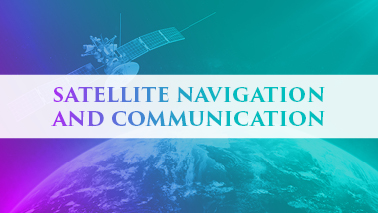
Satellite technology plays a crucial role in two major applications: satellite navigation and communication.
Navigation: satellite navigation systems utilize a network of satellites to provide precise location and timing information to users on Earth. By receiving signals from these satellites, a receiver on the ground or in a vehicle can calculate the user's position accurately. The most renowned satellite navigation system is the Global Positioning System (GPS), operated by the United States government. Additionally, other systems like the Russian GLONASS, the European Galileo, and the Chinese Beidou system contribute to satellite navigation.
Communication: satellite communication systems employ a network of satellites to transmit data between multiple points on Earth. These systems serve various purposes, including television and radio broadcasting, internet connectivity, and military communications. The process involves transmitting signals from a ground station to a satellite, which then relays the signal to another ground station. Notable examples of satellite communication systems include the Inmarsat system, utilized for maritime and aviation communication, and the Iridium system, facilitating global satellite phone communication.
Both satellite navigation and communication systems have revolutionized the way we navigate and communicate in today's world. They have enabled people to stay connected and communicate from any location worldwide, even in remote areas lacking traditional communication infrastructure. Moreover, satellite navigation systems have transformed transportation by providing easy navigation in unfamiliar territories and real-time traffic updates for drivers.
In conclusion, satellite navigation and communication systems are vital applications of satellite technology that have significantly impacted our lives. They have facilitated seamless communication, simplified navigation, and opened up new opportunities for global connectivity and information exchange.
Tags
Wireless Communications Conferences 2024
Cloud Computing Conferences
Satellite Networking Conferences
Aerospace Engineering Conferences
Satellite Conferences 2024 USA
Satellite Networking Conferences 2024
Satellite Conferences 2024
Satellite Communications Meetings
Satellite Engineering Conferences
Satellite Conferences 2024 Asia
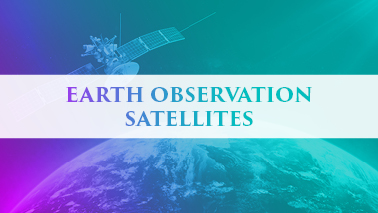
Satellites designed for Earth observation are spacecraft that are equipped with sensors capable of detecting various types of electromagnetic radiation, such as visible light, infrared, and microwave radiation. These satellites are used for a wide range of applications, including weather forecasting, natural resource management, environmental monitoring, and military surveillance.
One of the most significant applications of Earth observation satellites is weather forecasting. These satellites provide continuous monitoring of the Earth's atmosphere, oceans, and land surfaces, which is essential for accurate weather forecasting. They can detect changes in temperature, humidity, wind speed and direction, cloud cover, and other meteorological parameters. This information is used to create models that predict weather patterns and severe weather events.
Earth observation satellites are also used for environmental monitoring, including tracking the effects of climate change on the Earth's ecosystems. They can detect changes in vegetation cover, water resources, and land use, and provide valuable data for managing natural resources and responding to environmental disasters.
Another important application of Earth observation satellites is military surveillance. Satellites can provide continuous monitoring of enemy activity, and can detect movements of troops, vehicles, and ships. They can also provide real-time images of battlefields, which is useful for planning military operations.
In conclusion, Earth observation satellites are critical tools for understanding the Earth and its environment. They provide valuable data for weather forecasting, natural resource management, environmental monitoring, and military surveillance. As technology continues to advance, Earth observation satellites will continue to play an important role in shaping our understanding of the world we live in.
Tags
Satellite Communications Conferences 2024
Remote Sensing Conferences
Satellite Conferences
Satellite Communications Conferences
Satellite Networking Conferences
Cloud Computing Conferences
Satellite Conferences 2024
Aerospace Engineering Conferences
Satellite Conferences 2024 Middle East
Wireless Communications Conferences 2024
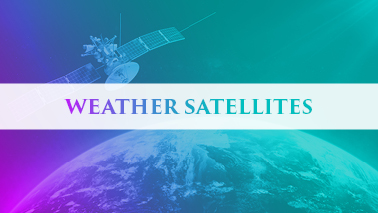
Weather satellites play a crucial role in monitoring and predicting weather patterns and severe weather events. Equipped with sensors capable of detecting various forms of electromagnetic radiation, such as visible light, infrared, and microwave radiation, these satellites provide essential data for accurate weather forecasting.
By continuously monitoring the Earth's atmosphere, oceans, and land surfaces, weather satellites can detect changes in temperature, humidity, wind speed and direction, cloud cover, and other meteorological parameters. This information is then used to develop models that predict weather patterns and severe weather events like hurricanes, tornadoes, and thunderstorms.
There are different types of weather satellites, including geostationary satellites and polar orbiting satellites. Geostationary satellites remain fixed in a specific position in space, allowing them to continuously monitor a particular region of the Earth's surface. They are commonly used for short-term weather forecasting and tracking severe weather. On the other hand, polar orbiting satellites orbit the Earth in a north-south direction, providing global coverage of the Earth's surface. These satellites are often utilized for long-term weather forecasting and climate monitoring.
The advent of weather satellites has revolutionized our ability to predict and prepare for severe weather events. They provide accurate and timely information about weather patterns, enabling informed decisions regarding public safety, transportation, and agriculture. For instance, farmers can plan their planting and harvesting seasons based on weather conditions, thanks to the data provided by weather satellites. Moreover, these satellites can issue early warnings of severe weather events, potentially saving lives and preventing property damage.
In conclusion, weather satellites are an indispensable tool for predicting and monitoring weather patterns and severe weather events. They supply valuable data for weather forecasting, climate monitoring, and responding to natural disasters, and have brought about a significant transformation in our approach to weather prediction.
Tags
Cloud Computing Conferences
Satellite Communications Meetings
Remote Sensing Conferences
Satellite Conferences
Satellite Engineering Conferences
Satellite Communications Conferences
Satellite Conferences 2024
Satellite Conferences 2024 Europe
Satellite Networking Conferences 2024
Aerospace Engineering Conferences
Satellite Conferences 2024 USA
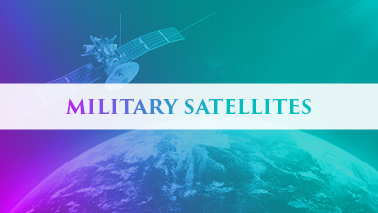
Military satellites serve various purposes in the military, including surveillance, reconnaissance, communication, and navigation. These satellites are specifically designed to gather important intelligence and strategic information for military forces worldwide.
Surveillance and reconnaissance are among the primary functions of military satellites. By continuously monitoring enemy activities, these satellites can detect troop movements, vehicle deployments, and naval operations. Additionally, they can provide real-time imagery of battlefields, aiding in the planning of military operations.
Communication is another vital application of military satellites. They offer secure and reliable communication channels for military forces, even in remote and hostile areas. Through satellites, messages, voice communication, and data can be relayed in real-time, enabling efficient coordination and swift responses to changing situations.
Military satellites also play a crucial role in navigation. They provide accurate and dependable positioning information, which is essential for guiding missiles, aircraft, and ground vehicles. Furthermore, they offer valuable data on the location of enemy forces and targets, enabling effective planning of military operations.
Moreover, military satellites provide early warning capabilities for missile launches and other threats to national security. By detecting missile launches, they can promptly alert military forces, allowing them to take defensive measures to safeguard themselves and their assets.
In summary, military satellites are indispensable in modern military operations. They supply valuable intelligence and strategic information, enhancing situational awareness, communication, navigation, and national security.
Tags
Cloud Computing Conferences
Satellite Communications Conferences 2024
Satellite Conferences 2024 USA
Wireless Communications Conferences 2024
Satellite Communications Meetings
Satellite Networking Conferences
Aerospace Engineering Conferences
GIS Conferences
Satellite Networking Conferences 2024
Remote Sensing Conferences
Satellite Conferences
Satellite Conferences 2024 Asia
Satellite Conferences 2024 Middle East
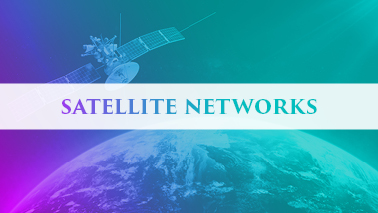
Satellite networks play an important role in providing a wide range of services, including television broadcasting, telephone and internet services, navigation systems, and remote sensing. These networks utilize satellites orbiting the Earth to connect remote locations, facilitate communication in areas without terrestrial infrastructure, and serve as backup systems during disasters.
There are two main types of satellite networks: geostationary and low Earth orbit (LEO).
Geostationary: geostationary satellites are positioned approximately 36,000 kilometers above the Earth's surface and rotate at the same rate as the Earth, appearing stationary in the sky. This makes them ideal for applications like television broadcasting and satellite phones.
Low Earth orbit: LEO satellites orbit a few hundred to a few thousand kilometers above the Earth and move at a faster pace than geostationary satellites. They are primarily used for global positioning systems (GPS) and remote sensing.
Operating satellite networks involves intricate systems that necessitate advanced ground infrastructure for satellite control and management. This infrastructure comprises ground stations, antennas, and control centers. Additionally, the satellites themselves are intricate systems that require meticulous design, manufacturing, and testing.
In recent times, there has been a notable increase in interest towards satellite networks due to the availability of low-cost launch vehicles and the growing demand for high-speed internet in remote areas. Companies like SpaceX and OneWeb are presently working on developing large-scale LEO satellite constellations to provide global internet coverage.
Tags
Satellite Networking Conferences 2024
Satellite Engineering Conferences
Satellite Communications Conferences
GIS Conferences
Satellite Conferences 2024 Middle East
Satellite Conferences 2024
Wireless Communications Conferences 2024
Satellite Communications Conferences 2024
Cloud Computing Conferences
Satellite Networking Conferences
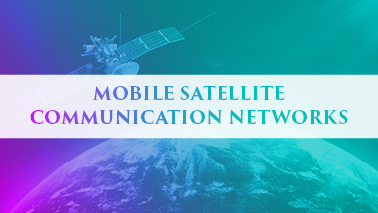
Mobile satellite communication networks enable mobile devices to establish communication with satellites orbiting the Earth. These networks are essential in areas where conventional terrestrial networks are inaccessible, such as remote regions, offshore locations, and areas affected by natural disasters.
The functioning of mobile satellite communication networks involves a network of satellites positioned in various orbits around the Earth. Acting as communication relays, these satellites receive and transmit signals from mobile devices on the ground. Special antennas on the mobile devices facilitate communication with the satellites by transmitting signals to them.
There are two main types of mobile satellite communication networks: geostationary and non-geostationary. Geostationary satellites remain fixed in space, providing coverage over a large area. On the other hand, non-geostationary satellites orbit the Earth at a lower altitude, offering coverage over a smaller area.
One of the key advantages of mobile satellite communication networks is their ability to provide coverage over vast geographic areas, making them highly suitable for use in remote regions and areas affected by natural disasters. Unlike traditional terrestrial networks, these networks are not affected by terrain or distance, ensuring a reliable communication link.
Mobile satellite communication networks find applications in various fields, including maritime communication, aviation communication, emergency communication, and military communication. Additionally, they play a crucial role in global positioning systems (GPS), which utilize satellite signals to determine the location of mobile devices.
To summarize, mobile satellite communication networks are a vital form of wireless communication system that offer dependable and extensive communication services. They prove particularly valuable in areas where traditional terrestrial networks are unavailable.
Tags
Satellite Communications Conferences 2024
Satellite Conferences 2024 Middle East
Remote Sensing Conferences
Wireless Communications Conferences 2024
Satellite Engineering Conferences
Satellite Conferences 2024 USA
Satellite Communications Conferences
Satellite Conferences 2024 Europe
Satellite Networking Conferences
GIS Conferences
Satellite Conferences 2024 Asia
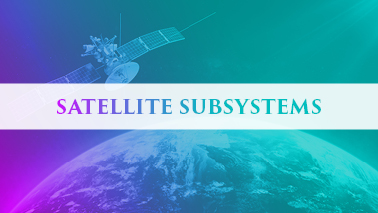
Satellites consist of various subsystems that work together to accomplish their designated tasks. Here are some of the crucial subsystems that are typically present in a satellite:
Power subsystem: This subsystem consists of solar arrays that generate power for the satellite and batteries to store excess power for use during periods of reduced sunlight or eclipses.
Communication subsystem: This subsystem consists of antennas, transmitters, and receivers allowing the satellite to establish communication with the ground and other satellites.
Attitude control subsystem: This subsystem involves sensors, reaction wheels, and thrusters to control the satellite's orientation and maintain its stability.
Thermal control subsystem: This subsystem includes radiators, heaters, and insulation to regulate the satellite's temperature and shield it from extreme temperature fluctuations.
Command and data handling subsystem: This subsystem incorporates computers, software, and data storage devices responsible for managing the satellite's operations, processing data collected by satellite instruments, and transmitting the data to the ground.
Payload subsystem: This subsystem comprises instruments and sensors specifically designed to carry out the satellite's designated mission tasks, such as Earth observation or navigation.
Satellite subsystems are typically designed to operate autonomously, with redundancy and fault tolerance implemented to ensure the satellite's continuous functionality, even in the event of subsystem failures.
Tags
Satellite Conferences 2024 Europe
Satellite Communications Meetings
Satellite Networking Conferences
Satellite Conferences 2024
GIS Conferences
Remote Sensing Conferences
Aerospace Engineering Conferences
Satellite Networking Conferences 2024
Cloud Computing Conferences
Satellite Conferences 2024 USA
Satellite Conferences 2024 Middle East
Satellite Engineering Conferences
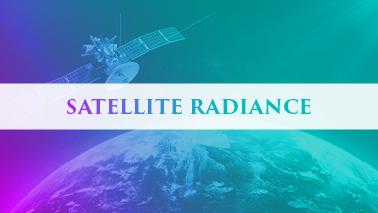
Satellite radiance is the term used to describe the amount of electromagnetic radiation detected by a satellite sensor, which is emitted or reflected by the Earth's surface and atmosphere. This radiation is measured at various wavelengths, from the visible to the infrared and microwave regions of the spectrum.
Satellite radiance plays a crucial role in numerous remote sensing applications, including weather prediction, climate modeling, and natural resource administration. Through the measurement of radiance emitted by the Earth's surface and atmosphere, satellites offer valuable insights into temperature, moisture, vegetation, and various environmental factors.
Satellite radiance is commonly assessed through sensors that possess sensitivity towards particular wavelength ranges. To illustrate, visible and infrared sensors are employed to gauge radiance within the visible and infrared segments of the spectrum, whereas microwave sensors are utilized to measure radiance within the microwave segment of the spectrum.
The radiance measurements acquired from satellite sensors serve as the basis for calculating diverse derived parameters, including temperature, humidity, and surface reflectance. Subsequently, these parameters are employed to produce maps and images that furnish valuable insights into the Earth's environment.
Measuring satellite radiance poses a challenge due to atmospheric effects, including radiation scattering and absorption by gases and aerosols. To address this, advanced radiative transfer models are utilized to simulate the impact of the atmosphere on satellite radiance measurements.
Satellite radiance is a crucial parameter for remote sensing applications, offering significant insights into the Earth's environment. With the progress in satellite sensor technology and radiative transfer modeling, we can now measure and interpret satellite radiance more accurately, leading to a better comprehension of the Earth's environment and supporting various applications.
Tags
GIS Conferences
Satellite Conferences 2024 USA
Satellite Conferences 2024 Middle East
Satellite Networking Conferences
Satellite Conferences 2024
Satellite Conferences
Satellite Engineering Conferences
Satellite Conferences 2024 Asia
Satellite Communications Conferences 2024
Aerospace Engineering Conferences
Satellite Conferences 2024 Europe
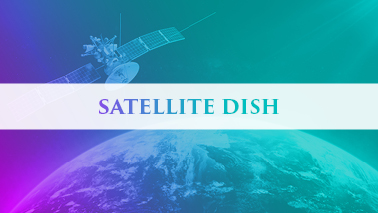
A parabolic antenna, commonly known as a satellite dish, is utilized to receive signals from a satellite orbiting the Earth. The dish is designed to concentrate the incoming radio frequency signals onto a small receiver located at the focal point of the dish, which amplifies and decodes the signals.
Satellite dishes are available in various sizes, depending on the frequency of the signals they are intended to receive and the location of the user. Larger dishes are typically required to receive higher frequency signals, such as those used for high-definition television or satellite internet.
The primary components of a satellite dish include the parabolic reflector, which is the concave dish that reflects the signals onto the receiver; the feed horn, which is the device that collects the signals and directs them into the receiver; and the LNB (low noise block) converter, which amplifies and converts the signals into a form that can be decoded by a satellite receiver.
Satellite dishes can be mounted on a variety of structures, such as poles, walls, or rooftops, and must be aimed accurately at the satellite in order to receive the signals. This typically requires the use of a satellite signal meter and careful adjustment of the dish's position and angle.
Satellite dishes are used for a variety of applications, including television broadcasting, satellite internet, and satellite radio. They are also used for scientific and military applications, such as remote sensing and surveillance.
In recent years, advancements in satellite technology have led to the development of smaller and more efficient satellite dishes, making satellite communication and broadcasting more accessible and widespread.
Tags
Satellite Conferences 2024
Cloud Computing Conferences
Wireless Communications Conferences 2024
Satellite Conferences
Satellite Conferences 2024 Asia
Satellite Conferences 2024 Europe
Satellite Networking Conferences
Remote Sensing Conferences
Satellite Conferences 2024 USA
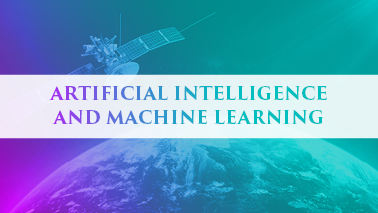
Artificial Intelligence (AI) and Machine Learning (ML) are two interconnected disciplines that revolve around the creation of intelligent machines capable of performing tasks that typically require human intelligence.
AI encompasses a broader scope, encompassing the development of machines that can execute intelligent tasks such as comprehending natural language, identifying images, and making decisions. On the other hand, ML is a subset of AI that focuses on teaching machines to learn from data without explicit programming. In simpler terms, ML algorithms learn from examples and experiences, utilizing that knowledge to make predictions or decisions.
AI and ML find numerous applications in various domains, including image and speech recognition, natural language processing, autonomous vehicles, and recommendation systems.
The success of AI and ML heavily relies on data, necessitating substantial amounts of high-quality data for training the algorithms. Consequently, this has led to the emergence of big data technologies, facilitating the storage and processing of vast quantities of data.
Deep learning, a subset of ML, involves training artificial neural networks with multiple layers to learn and make predictions. This breakthrough has significantly impacted fields like computer vision and natural language processing.
One of the challenges associated with AI and ML is ensuring that the algorithms remain unbiased and fair, avoiding the perpetuation of existing social biases or discrimination. Consequently, there is an increased emphasis on ethical considerations in AI and ML research and development.
Overall, AI and ML are rapidly advancing fields with a wide range of applications, poised to have a significant impact on numerous industries and aspects of daily life in the near future.
Tags
Satellite Conferences 2024 Middle East
Satellite Communications Conferences 2024
Satellite Communications Conferences
GIS Conferences
Satellite Conferences 2024
Wireless Communications Conferences 2024
Satellite Networking Conferences 2024
Remote Sensing Conferences
Satellite Networking Conferences
Aerospace Engineering Conferences
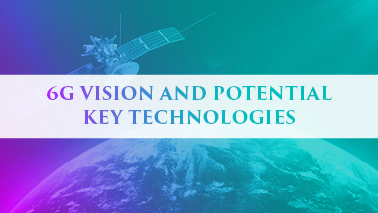
6G is the upcoming iteration of wireless communication technology that is anticipated to supersede 5G in the near future. While 5G already offers enhanced download speeds and reduced latency, 6G is projected to deliver even faster data rates, lower latency, and more dependable connectivity. Additionally, it will enable the emergence of novel applications and use cases.
There are several potential key technologies that could be utilized in the development of 6G.
Terahertz (THz) communication: Terahertz (THz) communication, which operates at much higher frequencies compared to the radio waves currently used in wireless communication systems. This higher frequency has the potential to enable significantly higher data rates. However, THz waves face challenges as they are easily absorbed by the atmosphere and other materials. Overcoming these challenges will require the development of new antenna designs and signal processing techniques.
Quantum communication: Quantum communication utilizes the principles of quantum mechanics to establish ultra-secure communication channels that are highly resistant to eavesdropping. Although still in the early stages of development, quantum communication holds the potential to provide a secure and reliable means of communication for critical applications.
Edge computing: Edge computing refers to the processing of data in close proximity to its source, rather than transmitting it to a centralized cloud server. This approach offers the potential to reduce latency and enhance reliability within 6G networks. Additionally, it enables the development of real-time processing applications.
Artificial intelligence and machine learning: Artificial intelligence (AI) and machine learning (ML) can play a crucial role in optimizing and automating various aspects of 6G networks. These technologies can be utilized for tasks such as resource allocation, network management, and security enhancement.
Holographic beamforming: Holographic beamforming is a technique that utilizes an array of antennas to create a highly focused beam. This beam can be dynamically adjusted to track the movement of users or devices. By employing holographic beamforming, 6G networks can achieve highly reliable and efficient communication.
Wireless power transmission: Wireless power transmission involves the use of wireless communication waves to transfer power over short distances. This innovation opens up new possibilities for applications within 6G networks, including wireless charging of devices and sensors.
In general, the development of 6G is currently in its initial phases, with ongoing research and testing of various key technologies. Despite being in the early stages, 6G is anticipated to revolutionize wireless communication and pave the way for novel applications and use cases in the future.
Tags
GIS Conferences
Satellite Conferences 2024 Europe
Satellite Communications Conferences 2024
Satellite Conferences 2024
Wireless Communications Conferences 2024
Satellite Engineering Conferences
Satellite Communications Conferences
Satellite Communications Meetings
Aerospace Engineering Conferences
Satellite Conferences 2024 USA
Satellite Networking Conferences

The Internet of Everything (IoE) encompasses the idea of linking various devices and objects to the internet, extending beyond computers and smartphones to encompass everyday items like appliances, vehicles, and buildings. This facilitates enhanced connectivity, automation, and data exchange, ultimately resulting in more streamlined and productive systems and services.
A significant application of IoE lies in the creation of smart cities, which leverage cutting-edge technologies and data analysis to optimize different facets of urban living, including transportation, energy consumption, and public safety. Several key technologies employed in smart cities include:
Internet of Things (IoT) devices: Internet of Things (IoT) devices refer to sensors and devices that gather and transmit data on different aspects of the urban environment, such as traffic patterns, air quality, and energy usage.
Big data analytics: Smart cities utilize big data analytics, which involves analyzing large volumes of data from various sources, including IoT devices and social media, to gain insights into urban patterns and make informed decisions based on data.
Artificial intelligence and machine learning: Artificial intelligence and machine learning technologies play a crucial role in analyzing and interpreting the massive amounts of data generated by smart cities. These technologies also help automate and optimize various systems and services.
5G and other advanced wireless networks: Advanced wireless networks like 5G provide the necessary connectivity for Internet of Everything (IoE) devices, enabling real-time data sharing and communication.
Cloud computing: Cloud computing is an essential component of smart cities, as it enables the storage and processing of vast amounts of data. Additionally, it provides scalable computing resources for a wide range of applications. Smart cities leverage cloud computing to enhance various aspects of urban life.
One of the key applications of smart cities is intelligent transportation systems.
Intelligent transportation systems: These systems utilize real-time data on traffic patterns and public transportation to optimize routes and alleviate congestion. By analyzing this data, smart cities can make informed decisions to improve the efficiency of transportation networks.
Energy management: Energy management is another crucial area where smart cities utilize data analytics. By leveraging cloud computing, cities can optimize energy usage and reduce waste through the implementation of smart grids and other energy-efficient technologies. This data-driven approach enables cities to make informed decisions to enhance energy sustainability.
Public safety: Public safety is a top priority for smart cities, and cloud computing plays a vital role in this aspect. By utilizing data from sensors and cameras, cities can monitor for potential security threats in real-time. This enables authorities to respond quickly and effectively to emergencies, ensuring the safety of residents.
Healthcare: Healthcare is also significantly improved in smart cities through the use of Internet of Things (IoT) devices. These devices enable the monitoring of public health trends and facilitate the optimization of healthcare delivery. Technologies such as telemedicine and remote care allow for efficient and accessible healthcare services.
In conclusion, the integration of cloud computing, IoT, and smart cities represents a growing trend towards greater connectivity and data-driven decision-making. This trend has the potential to significantly enhance the efficiency and quality of urban life.
Tags
Aerospace Engineering Conferences
Remote Sensing Conferences
Wireless Communications Conferences 2024
Satellite Engineering Conferences
Satellite Networking Conferences 2024
Satellite Conferences 2024 Europe
Satellite Communications Meetings
Satellite Conferences 2024
Satellite Conferences 2024 Middle East
Satellite Communications Conferences 2024
Satellite Conferences
Satellite Conferences 2024 USA
GIS Conferences
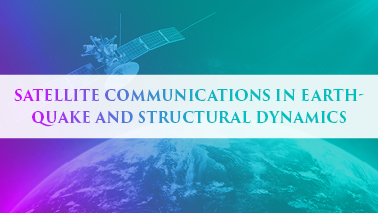
Satellite communications have a significant role to play in earthquake and structural dynamics, as they provide real-time information on the extent of damage and the location of affected areas. This information is crucial for coordinating emergency response efforts and delivering aid to affected communities.
During an earthquake, satellite-based systems like GPS can be utilized to swiftly locate and track the movement of tectonic plates. They can also serve as early warning systems, helping to mitigate the impact of the earthquake. Furthermore, satellite imagery can be employed to assess the damage to buildings and infrastructure, which is vital for determining where resources should be allocated for response and recovery efforts.
Satellite communication is also valuable for supporting research and monitoring in structural dynamics. For instance, sensors such as accelerometers can be attached to buildings and other structures to monitor their response to earthquake-induced vibrations. This data can then be transmitted via satellite for analysis and modeling. This aids engineers and researchers in gaining a better understanding of how structures behave during earthquakes and in developing more effective methods for designing earthquake-resistant structures.
Apart from these direct applications, satellite communications also play a crucial role in facilitating communication and coordination among first responders and emergency management teams during earthquake and other disaster scenarios. This ensures that resources are deployed efficiently and effectively, and that affected communities receive the necessary support to recover and rebuild.
Tags
Satellite Conferences
Satellite Engineering Conferences
Remote Sensing Conferences
Aerospace Engineering Conferences
Cloud Computing Conferences
GIS Conferences
Satellite Communications Conferences 2024
Satellite Conferences 2024 Middle East
Satellite Networking Conferences
Satellite Conferences 2024 Europe

Satellite communications are of utmost importance in the field of climate change research and weather forecasting. They enable continuous and global coverage of the Earth's surface, facilitating the collection of vast amounts of data on weather patterns, ocean currents, and other environmental factors.
An essential application of satellite communications in climate change is the monitoring of atmospheric and oceanic conditions. By providing real-time data on temperature, precipitation, and other meteorological variables, satellites allow for the tracking of climate change patterns and the development of predictive models. This information is crucial for scientists and policymakers to make well-informed decisions regarding the mitigation and adaptation strategies for the impacts of climate change.
Furthermore, satellite communications play a pivotal role in weather forecasting. Through the provision of high-resolution images and data on cloud cover, temperature, and other atmospheric conditions, satellites aid in the development of models for short-term weather forecasting. Meteorologists utilize these models to predict weather patterns, including storms and hurricanes, and issue timely warnings and advisories to the public.
Apart from their direct applications in climate change and weather forecasting, satellite communications also support various research and development activities. For instance, satellite data can be utilized to map the Earth's surface and monitor changes in vegetation, assisting in tracking the impact of climate change on ecosystems and agricultural production. Similarly, satellite data can be employed to monitor sea levels, aiding in the understanding of the effects of climate change on coastal communities and infrastructure.
In conclusion, satellite communications play a critical role in climate change research and weather forecasting by providing the necessary data and information to enhance our understanding and prediction of environmental changes. They also contribute to the development of effective strategies for mitigating the impacts of climate change.
Tags
Satellite Conferences 2024
Satellite Networking Conferences
Satellite Networking Conferences 2024
Wireless Communications Conferences 2024
Remote Sensing Conferences
GIS Conferences
Satellite Conferences 2024 Asia
Aerospace Engineering Conferences
Satellite Conferences 2024 Middle East
Satellite Communications Meetings
Satellite Communications Conferences
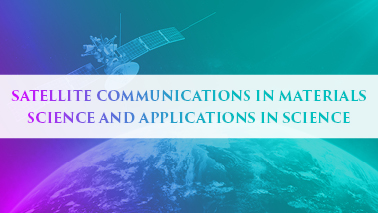
Satellite communications have a crucial role to play in the realm of materials science research, as they enable real-time collaboration among scientists and researchers worldwide. Materials science is a multidisciplinary field that encompasses the study of materials' properties and applications, including metals, ceramics, polymers, and composites. Advanced analytical techniques like electron microscopy, X-ray diffraction, and spectroscopy are often employed in this field, generating vast amounts of data that necessitate sharing and analysis by multiple parties.
The sharing of this data can be facilitated through satellite communications, allowing scientists and researchers to collaborate and exchange information in real time. For instance, satellite-based video conferencing and data sharing platforms can connect researchers in different locations, enabling them to simultaneously view and analyze data, regardless of their physical whereabouts. This fosters accelerated research and development in materials science by promoting greater collaboration and more efficient sharing of resources and expertise.
Beyond supporting collaboration and data sharing, satellite communications can also serve various other applications in materials science, such as remote sensing and imaging. Satellite-based remote sensing technologies, for instance, can be utilized to study materials' properties and behavior in extreme environments like high temperatures, pressures, or even in space. This aids in enhancing our understanding of materials' behavior under such conditions and facilitates the development of novel materials with exceptional properties and applications.
Tags
Satellite Conferences 2024 Asia
Satellite Communications Conferences
Satellite Engineering Conferences
GIS Conferences
Satellite Networking Conferences
Satellite Conferences
Satellite Communications Meetings
Satellite Conferences 2024 USA
Remote Sensing Conferences
Satellite Communications Conferences 2024
Cloud Computing Conferences
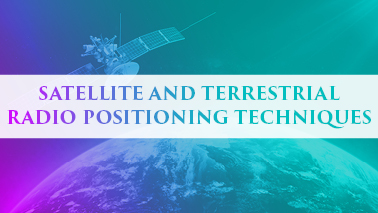
Satellite and terrestrial radio positioning methods are utilized to determine the precise location of objects or individuals on the Earth's surface. These techniques depend on the measurement of radio signals transmitted between satellites or terrestrial radio stations and a ground-based receiver. They have a wide range of applications, including navigation, mapping, and search and rescue operations.
Satellite positioning techniques are primarily based on Global Navigation Satellite Systems (GNSS) like the Global Positioning System (GPS), GLONASS, or Galileo. These systems utilize a network of satellites orbiting the Earth to transmit highly accurate timing signals. By measuring the time, it takes for these signals to reach the receiver and employing sophisticated algorithms, GNSS can provide reliable and precise positioning information.
On the other hand, terrestrial radio positioning techniques rely on radio signals transmitted from ground-based radio stations. These signals are typically of low frequency and can travel long distances, making them suitable for navigation and tracking purposes over vast areas. One commonly used terrestrial radio positioning technique is Radio Direction Finding (RDF), which involves the use of directional antennas to measure the strength and direction of incoming radio signals. By analyzing the signal strength and direction from multiple antennas, it becomes possible to triangulate the transmitter's position.
Different positioning techniques, whether satellite or terrestrial, offer their own set of advantages and limitations depending on the specific application. Satellite positioning techniques are typically known for their higher accuracy and reliability, although they can be affected by atmospheric conditions or signal blockage from buildings and structures. On the other hand, terrestrial radio positioning techniques can be utilized in areas where satellite signals may be weak or unavailable, but they may necessitate more intricate equipment and infrastructure.
Ultimately, the selection of a positioning technique relies on various factors, such as the desired level of accuracy, the availability of infrastructure, and the specific requirements of the application.
Tags
Satellite Communications Meetings
Aerospace Engineering Conferences
Satellite Conferences 2024 Asia
Satellite Communications Conferences 2024
Wireless Communications Conferences 2024
Cloud Computing Conferences
Satellite Conferences 2024 Europe
GIS Conferences
Satellite Conferences 2024 USA
Satellite Communications Conferences
Satellite Conferences 2024 Middle East
Satellite Engineering Conferences
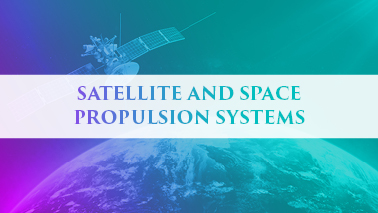
Satellite and space propulsion systems play a crucial role in maneuvering and controlling spacecraft both in orbit and beyond. These systems are responsible for generating the necessary thrust to facilitate spacecraft movement, alter its velocity or trajectory, and maintain its position in space.
Various types of propulsion systems are utilized in space, such as chemical rockets, electric propulsion, and nuclear propulsion.
Chemical rockets are the most commonly employed propulsion system for spacecraft. They rely on chemical reactions to produce the required thrust for spacecraft propulsion. Typically, these rockets employ liquid or solid fuel, which undergo combustion in a chamber to generate a high-velocity exhaust stream that propels the spacecraft. Chemical rockets are known for their reliability, efficiency, and power, making them suitable for a wide range of space missions.
On the other hand, electric propulsion systems utilize electric or magnetic fields to accelerate ions or other charged particles. Although electric propulsion systems generate lower thrust compared to chemical rockets, they offer higher fuel efficiency. These systems find applications in deep-space missions, station-keeping, and orbit-raising. Nuclear propulsion systems, which employ nuclear reactions, are currently under development for potential use in future missions due to their ability to generate significant thrust.
Apart from the propulsion systems themselves, spacecraft rely on various types of engines and thrusters to generate thrust. These include chemical engines, ion engines, Hall-effect thrusters, and plasma thrusters, among others. Each engine or thruster type possesses unique advantages and limitations. Therefore, careful consideration of specific mission requirements is crucial when selecting a propulsion system for a spacecraft.
The progress and enhancement of satellite and space propulsion systems have facilitated a diverse array of scientific and commercial space missions, encompassing Earth observation, telecommunications, as well as the exploration of the solar system and beyond.
Tags
Satellite Networking Conferences
Aerospace Engineering Conferences
Satellite Conferences 2024 Middle East
Satellite Conferences 2024 Asia
GIS Conferences
Satellite Engineering Conferences
Satellite Communications Meetings
Satellite Conferences 2024 Europe
Remote Sensing Conferences
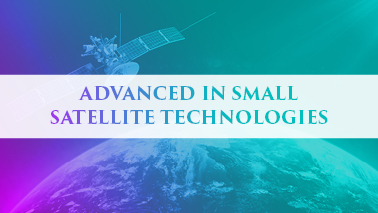
Small satellites, also referred to as CubeSats or nanosatellites, are gaining popularity due to their affordability and ease of deployment. In recent years, there have been significant advancements in small satellite technologies that have enhanced their capabilities and expanded their potential applications.
Here are some of the notable advancements:
1. Electronics miniaturization: The continuous miniaturization of electronics has enabled the development of smaller and lighter satellites that can still carry out intricate tasks. This has led to the creation of CubeSats, standardized small satellites that can be stacked together to form larger satellites.
2. Enhanced propulsion systems: Traditionally, propulsion systems have posed limitations for small satellites due to their fuel requirements and weight. However, advancements in electric propulsion systems and alternative fuels have resulted in the development of more efficient and lightweight propulsion systems.
3. Improved communication systems: Small satellites typically rely on ground stations to communicate with Earth. However, advancements in communication technologies, such as optical communication and mesh networking, have enabled small satellites to communicate more efficiently with each other and with Earth.
4. Increased computing power: Small satellites are now equipped with powerful computers that can handle complex computations and facilitate onboard data processing. This has opened up new possibilities for remote sensing and other applications.
5. Diverse applications: Small satellites are being utilized in various fields, including remote sensing, Earth observation, telecommunications, and scientific research. The affordability and ease of deployment of small satellites are enabling more organizations to participate in space exploration and research.
Overall, these advancements in small satellite technologies are significantly reducing the cost of complex space missions compared to traditional satellites. This is creating new opportunities and expanding the horizons of space exploration.
Tags
Satellite Networking Conferences
Satellite Communications Conferences
Satellite Engineering Conferences
Satellite Networking Conferences 2024
Satellite Conferences 2024 Middle East
Remote Sensing Conferences
Satellite Communications Conferences 2024
Satellite Conferences 2024
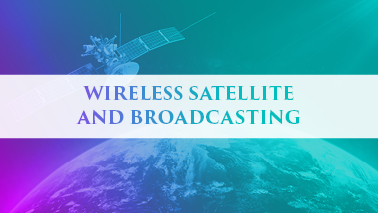
Wireless satellite and broadcasting are technologies that enable the transmission of information, such as data, voice, and video, over wireless networks using satellites.
Satellite communication involves the use of satellites in orbit around the earth to transmit signals between two or more points on the ground or in the air. Satellites can provide coverage over large geographical areas, making them ideal for applications such as television broadcasting, internet connectivity, and global positioning systems (GPS).
Wireless broadcasting, on the other hand, refers to the distribution of audio or video content to a wide audience using radio waves. This can be done through traditional broadcast media, such as radio and television, or through newer technologies such as streaming services that use wireless networks to deliver content over the internet.
Both wireless satellite and broadcasting technologies have revolutionized the way we communicate and access information, enabling us to connect with people and access content from virtually anywhere in the world. They have also opened up new opportunities for businesses and industries, such as e-commerce, remote work, and telemedicine.
Tags
Satellite Communications Conferences 2024
Satellite Communications Conferences
Wireless Communications Conferences 2024
Satellite Conferences 2024 Asia
Satellite Conferences 2024
Remote Sensing Conferences
Satellite Conferences 2024 Middle East
Satellite Networking Conferences 2024
Satellite Engineering Conferences
Satellite Conferences 2024 Europe
Aerospace Engineering Conferences
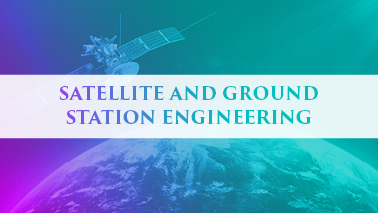
Satellite and ground station engineering are two related fields that involve the design, development, and operation of satellite systems and their corresponding ground-based infrastructure.
Satellite engineering involves the design, development, and testing of satellites, which are spacecraft placed in orbit around the Earth or other celestial bodies. Satellites can be used for a wide range of applications, such as communication, navigation, earth observation, and scientific research. Satellite engineers are responsible for ensuring that satellites are designed to meet the specific needs of each application, and that they are able to function reliably in the harsh environment of space.
Ground station engineering, on the other hand, involves the design and development of the ground-based infrastructure that is used to communicate with and control satellites. Ground stations are used to track satellites as they orbit the Earth, receive data and commands from the satellites, and transmit data back to the satellites. Ground station engineers are responsible for designing and maintaining the antennas, receivers, transmitters, and other equipment used in these operations.
Both satellite and ground station engineering require a strong background in engineering, physics, and mathematics, as well as an understanding of the unique challenges and constraints of working in space. These fields offer many opportunities for those interested in the development of advanced technologies, and are critical to many industries, including telecommunications, national defense, and scientific research.
Tags
Satellite Communications Meetings
Satellite Networking Conferences
Satellite Conferences 2024 USA
Satellite Conferences
Satellite Conferences 2024 Middle East
Cloud Computing Conferences
Aerospace Engineering Conferences
Satellite Networking Conferences 2024
Satellite Conferences 2024 Europe
Satellite Conferences 2024
Satellite Conferences 2024 Asia
Satellite Engineering Conferences
GIS Conferences
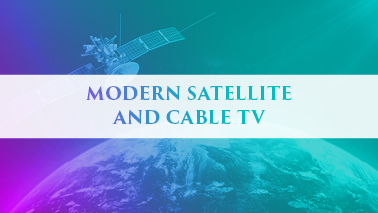
Modern satellite and cable TV are two popular forms of television broadcasting that use different technologies to deliver content to viewers.
Satellite TV uses communication satellites in orbit around the Earth to transmit television signals to satellite dishes installed on the rooftops of homes or businesses. The satellite dishes receive the signals and then send them to a set-top box or receiver, which decodes the signals and displays the TV channels on a television set. Satellite TV offers a wide range of channels and programming options, including high-definition and 4K programming, and is available in many parts of the world.
Cable TV, on the other hand, uses a wired network of coaxial cables to deliver television signals to homes and businesses. The cable TV provider typically runs a cable from a central location to a distribution box in a neighborhood, and then to individual homes and businesses. Cable TV can offer a wide range of channels and programming options, as well as high-speed internet and phone services over the same cable connection.
Both satellite and cable TV have advantages and disadvantages. Satellite TV can provide coverage over large geographical areas and is often the only option in rural or remote areas. However, it may be subject to signal disruptions during severe weather conditions. Cable TV, on the other hand, provides a reliable and consistent signal, but may not be available in all areas and can be more expensive than satellite TV.
In recent years, streaming services have become increasingly popular as an alternative to satellite and cable TV, offering viewers the ability to watch their favorite shows and movies on demand over the internet.
Tags
Satellite Conferences 2024 Asia
Aerospace Engineering Conferences
Satellite Communications Conferences
Satellite Conferences
Remote Sensing Conferences
Satellite Conferences 2024 Middle East
Satellite Conferences 2024 USA
Wireless Communications Conferences 2024
Satellite Engineering Conferences
Satellite Conferences 2024
Satellite Communications Conferences 2024

IPATM Mobile Satellite Networks is a type of mobile satellite communication network that provides global coverage to users who require reliable, secure, and high-speed voice, data, and video communication services in remote or difficult-to-reach areas. The network utilizes advanced satellite technology to deliver broadband connectivity to users on the move, such as maritime vessels, aircraft, emergency responders, and military personnel.
The IPATM network consists of a constellation of Low Earth Orbit (LEO) satellites that orbit the earth at an altitude of approximately 750 km. These satellites communicate with User Terminals (UTs) on the ground, sea, or air, enabling users to connect to the internet, make voice and video calls, and transmit data in real-time, regardless of their location.
One of the advantages of IPATM Mobile Satellite Networks is its ability to provide reliable and secure communication services in areas where terrestrial networks are unavailable or unreliable due to natural disasters, war zones, or remote locations. The network also offers advanced features such as bandwidth management, traffic prioritization, and Quality of Service (QoS) to ensure optimal performance and service quality.
IPATM Mobile Satellite Networks is widely used in various industries such as maritime, aviation, energy, mining, and defense. It has proven to be a vital communication tool in emergency situations, providing responders with the ability to coordinate and communicate effectively in times of crisis.
Tags
Satellite Networking Conferences 2024
Satellite Conferences 2024 USA
Satellite Networking Conferences
Satellite Communications Meetings
Satellite Conferences 2024
Satellite Conferences
Satellite Engineering Conferences
Satellite Conferences 2024 Middle East
Satellite Communications Conferences
Wireless Communications Conferences 2024
Remote Sensing Conferences
Cloud Computing Conferences

Digital video compression systems and standards are used to compress video data to reduce the size of video files and enable efficient storage and transmission of video content over networks. There are several video compression systems and standards in use today, including:
H.264/AVC (Advanced Video Coding): This is a widely used video compression standard that delivers high-quality video at lower bit rates. It is used for various applications, including Blu-ray discs, satellite and cable TV, and streaming video over the internet.
HEVC/H.265 (High-Efficiency Video Coding): This is the successor to H.264/AVC and provides even better compression while maintaining high-quality video. It is used for 4K and 8K video streaming and distribution, as well as for video surveillance and video conferencing.
MPEG-2 (Moving Picture Experts Group): This is a widely used video compression standard that is used for DVD and satellite and cable TV broadcasting.
MPEG-4: This is a flexible video compression standard that supports various multimedia applications, including video streaming, video conferencing, and digital television.
VP9: This is a video compression standard developed by Google that is used for online video streaming, including on YouTube.
AV1: This is an open-source video compression standard developed by the Alliance for Open Media, which includes companies like Google, Amazon, and Netflix. It is designed to provide high-quality video compression while remaining royalty-free.
These are just a few of the many video compression systems and standards available today. The choice of which standard to use depends on factors such as the application, the desired video quality, and the available network bandwidth.
Tags
Satellite Communications Conferences 2024
Satellite Conferences 2024 Europe
Aerospace Engineering Conferences
Satellite Conferences 2024 Asia
Satellite Networking Conferences 2024
Satellite Communications Conferences
Satellite Conferences 2024
Satellite Conferences 2024 USA
Satellite Engineering Conferences
GIS Conferences
Cloud Computing Conferences
Satellite Conferences
Satellite Communications Meetings
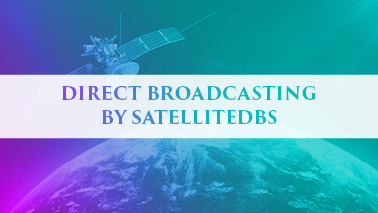
Direct Broadcasting by Satellite (DBS) is a form of satellite television broadcasting in which a satellite transmits television programming directly to the end-user's satellite dish. DBS services were first introduced in the early 1990s and have since become a popular means of delivering high-quality television programming to viewers around the world.
DBS systems work by transmitting programming from a television station or cable network to a satellite in geostationary orbit above the Earth. The satellite then re-transmits the programming back to Earth, where it is received by a small dish antenna and decoder box installed in the end-user's home or business. The decoder box decrypts the programming and displays it on the user's television.
DBS offers several advantages over traditional cable television systems, including:
Higher-quality picture and sound: Because DBS signals are transmitted via satellite, they are not subject to the same limitations as cable television signals, which can suffer from interference and signal degradation.
Greater selection of programming: DBS providers can offer a greater selection of programming than traditional cable television providers because they are not limited by the physical infrastructure of a cable network.
National and international coverage: DBS systems can provide coverage across entire countries or even continents, making them a popular choice for viewers in remote areas or for viewers who wish to access programming from other regions or countries.
Interactive features: DBS systems can also offer interactive features such as video-on-demand, pay-per-view, and interactive program guides.
Some of the popular DBS providers include DirecTV and DISH Network in the United States, Sky in the United Kingdom and Europe, and Tata Sky in India.
Tags
Satellite Conferences
Satellite Networking Conferences
Satellite Conferences 2024
Satellite Conferences 2024 USA
GIS Conferences
Aerospace Engineering Conferences
Satellite Conferences 2024 Asia
Cloud Computing Conferences
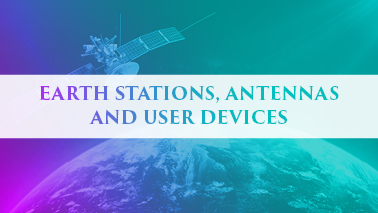
Earth Stations, antennas, and user devices are important components of communication systems that are used to transmit and receive signals between different locations on Earth.
Earth Stations:
An Earth Station is a facility that is designed to communicate with satellites in orbit. It consists of a dish antenna that is used to receive and transmit signals to and from the satellite. The Earth Station also includes electronic equipment that is used to process the signals, such as amplifiers, filters, and modems.
Antennas:
Antennas are devices that are used to transmit and receive electromagnetic waves. They come in different shapes and sizes, but they all work on the same basic principle of converting electrical energy into radio waves that can be transmitted through the air. Antennas are used in a variety of applications, including broadcasting, wireless communication, and radar systems.
User Devices:
User devices are electronic devices that are used to communicate with other devices or systems. Examples of user devices include smartphones, laptops, and tablets. These devices are equipped with antennas and other communication technologies that allow them to send and receive signals wirelessly. User devices play an important role in modern communication systems, as they allow people to communicate with each other from anywhere in the world.
Tags
Satellite Conferences 2024 Asia
Satellite Communications Meetings
Satellite Conferences
Satellite Conferences 2024 Middle East
Satellite Conferences 2024 USA
Remote Sensing Conferences
Wireless Communications Conferences 2024
Satellite Networking Conferences 2024
Satellite Communications Conferences 2024
Satellite Communications Conferences
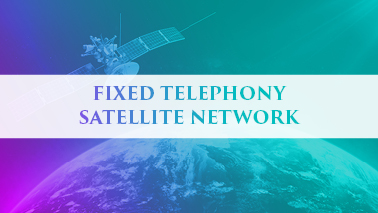
A Fixed Telephony Satellite Network is a communication system that uses satellites to provide telephony services to users in remote or rural areas where traditional landline or cellular networks may not be available or feasible.
In a Fixed Telephony Satellite Network, a user typically has a fixed satellite dish antenna installed at their location, which is connected to a satellite modem or a satellite phone. The dish antenna receives and transmits signals to a geostationary satellite, which relays the signal back to a ground station on Earth. The ground station then connects the call to the public switched telephone network (PSTN), allowing the user to make a call to any other phone in the world.
Fixed Telephony Satellite Networks can be used in a variety of applications, including remote communities, oil and gas operations, maritime vessels, and military operations. They are also useful in disaster relief efforts, where traditional communication networks may be damaged or non-existent. While Fixed Telephony Satellite Networks can provide reliable communication services to users in remote areas, they tend to have higher costs and lower bandwidth compared to terrestrial communication networks.
Tags
Remote Sensing Conferences
Satellite Conferences 2024
GIS Conferences
Satellite Conferences 2024 USA
Satellite Conferences 2024 Asia
Satellite Communications Meetings
Satellite Conferences 2024 Europe
Satellite Conferences
Satellite Communications Conferences 2024
Wireless Communications Conferences 2024
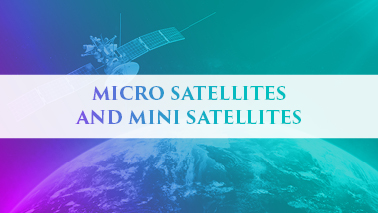
Microsatellites and minisatellites are both types of small satellites used for various applications, including Earth observation, communications, and scientific research. While there is no universally accepted definition for either type of satellite, they are generally defined based on their size and mass.
Microsatellites are typically defined as satellites with a mass of less than 100 kilograms, although some definitions may allow for slightly larger masses. They are typically built using off-the-shelf components and are relatively inexpensive to produce and launch. Microsatellites are often used for Earth observation, remote sensing, and scientific research, as well as for technology demonstration and testing.
Minisatellites are generally larger than microsatellites, with masses typically ranging from 100 to 500 kilograms. They are often more complex than microsatellites and may include more advanced scientific instruments or communication systems. Minisatellites are typically used for similar applications as microsatellites, but may also be used for more demanding missions, such as high-resolution imaging or long-duration scientific research.
Overall, both microsatellites and minisatellites have revolutionized the satellite industry by enabling more affordable and accessible access to space. They have helped to open up new opportunities for scientific research, commercial applications, and international cooperation in space exploration.
Tags
Cloud Computing Conferences
Satellite Conferences 2024 USA
Satellite Communications Conferences
Satellite Conferences 2024 Middle East
Satellite Communications Conferences 2024
Satellite Networking Conferences
Aerospace Engineering Conferences
Satellite Conferences 2024 Asia
GIS Conferences
Wireless Communications Conferences 2024
Satellite Networking Conferences 2024
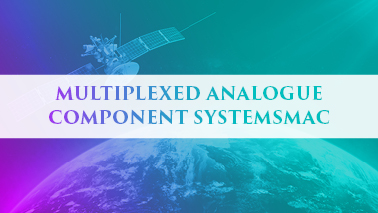
Multiplexed Analogue Component Systems (MAC) is a video transmission standard used in analog television systems. It was developed in Japan in the 1980s and was primarily used in high-definition television (HDTV) broadcasting.
The MAC standard uses analog modulation to transmit video signals over the airwaves. The video signal is divided into three color components (red, green, and blue), which are transmitted separately along with the synchronization signals. The MAC system uses frequency-division multiplexing (FDM) to combine the three color components into a single signal, which is then transmitted over the airwaves.
One of the key advantages of the MAC system was its ability to transmit high-quality video signals over long distances without significant degradation in picture quality. This was achieved through the use of advanced error-correction techniques and the use of a wider bandwidth than traditional analog TV systems.
However, with the advent of digital broadcasting technologies, the MAC system has become obsolete. Today, most countries have switched to digital TV broadcasting standards, such as DVB-T and ATSC, which offer better picture quality and more efficient use of the available spectrum.
Tags
Cloud Computing Conferences
Satellite Conferences 2024 Asia
Satellite Networking Conferences
Satellite Conferences 2024 Middle East
GIS Conferences
Satellite Conferences
Satellite Communications Conferences 2024
Satellite Conferences 2024 USA
Satellite Communications Meetings
Satellite Communications Conferences
Remote Sensing Conferences
Aerospace Engineering Conferences
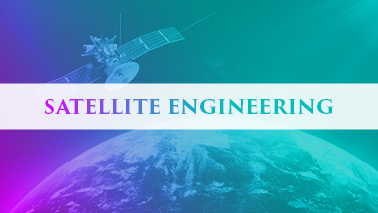
Satellite engineering is a field of engineering that involves the design, development, and operation of satellites, including their subsystems and components. The field encompasses a broad range of technical areas, including electrical, mechanical, aerospace, and computer engineering.
Satellite engineers work on all aspects of the satellite lifecycle, from the initial concept and design phases to launch, on-orbit operations, and end-of-life disposal. They are responsible for ensuring that the satellite is designed and built to meet the specific requirements of its intended mission, whether that is telecommunications, Earth observation, scientific research, or military surveillance.
Some of the key technical areas involved in satellite engineering include:
Attitude control and orbit determination: This involves the design and implementation of systems and algorithms to control the satellite's attitude (orientation) and determine its precise location in space.
Power and thermal management: This includes the design and integration of systems to generate and distribute power, as well as manage the satellite's thermal environment to ensure that it operates within its temperature limits.
Communications: This involves the design and integration of systems to transmit and receive data between the satellite and ground stations, as well as between different spacecraft in orbit.
Payload integration: This includes the design and integration of the specific instruments or sensors that are used to collect data or perform experiments, such as cameras, spectrometers, and magnetometers.
Launch and deployment: This involves the design and testing of the mechanisms and systems used to launch the satellite into orbit and deploy it into its operational configuration.
Satellite engineering requires a strong background in physics, mathematics, and engineering, as well as experience with specialized software tools used in satellite design and analysis. It is a complex and challenging field, but also one that offers the opportunity to work on cutting-edge technologies and contribute to important scientific and commercial missions.
Tags
Satellite Engineering Conferences
Satellite Networking Conferences 2024
Satellite Communications Conferences
Satellite Conferences 2024 Europe
Wireless Communications Conferences 2024
Remote Sensing Conferences
Satellite Conferences
GIS Conferences
Aerospace Engineering Conferences
Satellite Communications Meetings
Satellite Conferences 2024 Asia

Spacecraft configuration refers to the physical design and layout of a spacecraft, including its overall shape, size, and arrangement of its various subsystems and components. The configuration of a spacecraft is critical to its performance and capabilities, and is tailored to the specific requirements of its mission.
The configuration of a spacecraft can vary widely depending on its intended mission, but generally includes the following subsystems:
Structural subsystem: This subsystem provides the physical framework for the spacecraft, including its outer shell, internal support structures, and attachment points for other subsystems.
Propulsion subsystem: This subsystem provides the means for the spacecraft to maneuver and maintain its orbit. It includes engines, fuel tanks, thrusters, and other components necessary for propulsion.
Power subsystem: This subsystem provides the spacecraft with the necessary power to operate its various systems and subsystems. It includes solar panels, batteries, and other components necessary for power generation and distribution.
Communication subsystem: This subsystem provides the means for the spacecraft to communicate with ground stations and other spacecraft. It includes antennas, transmitters, receivers, and other components necessary for communication.
Navigation subsystem: This subsystem provides the means for the spacecraft to determine its position and orientation in space. It includes sensors, gyroscopes, and other components necessary for navigation.
Thermal subsystem: This subsystem manages the temperature of the spacecraft and its various components, ensuring that they remain within their operating temperature ranges. It includes radiators, heat shields, and other components necessary for thermal management.
The overall configuration of a spacecraft is determined by a variety of factors, including its mission objectives, payload requirements, launch vehicle capabilities, and available resources. The configuration of a spacecraft must be optimized for its intended mission, and must take into account a variety of technical and operational constraints, including mass, volume, power, and communication capabilities.
Tags
Satellite Conferences
Satellite Communications Conferences 2024
Aerospace Engineering Conferences
Satellite Communications Meetings
Satellite Conferences 2024 USA
Satellite Engineering Conferences
Satellite Conferences 2024 Middle East
Satellite Conferences 2024 Europe
Satellite Conferences 2024
Satellite Communications Conferences
Satellite Networking Conferences 2024
Satellite Conferences 2024 Asia
Wireless Communications Conferences 2024

Satellites can be placed in different orbit configurations depending on their intended purpose and the requirements of the mission. Some of the most common satellite orbit configurations include:
Low Earth Orbit (LEO): Satellites in LEO orbit at an altitude of 160 to 2000 km above the Earth's surface. They typically have a short orbital period, ranging from 90 minutes to a few hours, and are used for a wide range of applications, including Earth observation, telecommunications, and scientific research.
Medium Earth Orbit (MEO): Satellites in MEO orbit at an altitude of around 2000 to 36,000 km above the Earth's surface. They have a longer orbital period than LEO satellites, typically taking several hours to complete one orbit. MEO satellites are commonly used for navigation and positioning systems such as GPS and GLONASS.
Geostationary Orbit (GEO): Satellites in GEO orbit at an altitude of around 36,000 km above the Earth's surface. They have an orbital period of 24 hours, which means that they remain in a fixed position relative to the Earth's surface. GEO satellites are commonly used for telecommunications and weather monitoring.
Highly Elliptical Orbit (HEO): Satellites in HEO have an elliptical orbit that takes them to high altitudes above the Earth's surface, typically ranging from 10,000 to 50,000 km. HEO satellites are used for a range of applications, including communications, remote sensing, and scientific research.
Polar Orbit: Satellites in polar orbit pass over the Earth's poles, traveling from north to south and vice versa. They typically have a low altitude and a short orbital period, making them well-suited for Earth observation and scientific research missions.
Satellite orbit configurations are chosen based on a number of factors, including the desired mission requirements, the coverage area needed, and the technical capabilities of the satellite and launch vehicle. Each orbit configuration has its own unique advantages and challenges, and the choice of orbit can have a significant impact on the success of a satellite mission.
Tags
GIS Conferences
Satellite Communications Meetings
Satellite Conferences 2024 Asia
Satellite Conferences
Wireless Communications Conferences 2024
Satellite Communications Conferences
Aerospace Engineering Conferences
Satellite Communications Conferences 2024
Satellite Conferences 2024 Middle East
Market Forecast of Satellite Industry in USA:
The future market forecast for satellites in the USA is expected to continue to grow in the coming years. The satellite industry is a crucial part of the modern world, with satellite technology used for communication, navigation, weather forecasting, and scientific research, among other things.
According to a report by Euroconsult, the global satellite market is projected to reach a total of $368 billion by 2028, with the United States remaining the largest contributor to the industry's growth. The report also predicts that the demand for satellite services will continue to increase, driven by factors such as the growing need for data connectivity, increased demand for high-quality video content, and the rise of the Internet of Things (IoT) and autonomous vehicles.
In addition, the increasing popularity of space-based services such as satellite broadband and satellite television is expected to drive demand for more advanced and capable satellites. This, in turn, is expected to create opportunities for satellite manufacturers, launch service providers, and other satellite-related businesses.
Furthermore, the US government's increased focus on national security and defense is expected to lead to increased demand for satellite-based surveillance, communication, and navigation capabilities. The commercialization of space and the growing number of private companies investing in space-related activities are also expected to contribute to the growth of the satellite industry in the USA.
Overall, the future market forecast for satellites in the USA appears to be positive, with continued growth expected in the coming years.
Market Forecast of Satellite Industry in Europe:
The future market forecast for satellites in Europe is also positive, with continued growth expected in the coming years. The European satellite industry is a crucial part of the global satellite market, with European companies involved in the manufacturing, launch, and operation of a significant number of satellites.
According to a report by Euroconsult, the European satellite market is projected to reach a total of $25.7 billion by 2028, with growth being driven by several factors such as the increasing demand for satellite-based services and the growth of the Internet of Things (IoT) and 5G networks.
In addition, the European Space Agency (ESA) and its member states are investing heavily in the development of new space technologies and applications, which is expected to create opportunities for European satellite manufacturers and other space-related businesses.
Furthermore, the European Union's (EU) focus on the development of a European Space Program and the creation of a single market for space services is expected to drive growth in the European satellite industry. The EU's investment in space-based applications such as satellite-based navigation and earth observation is also expected to contribute to the growth of the industry.
Overall, the future market forecast for satellites in Europe appears to be positive, with continued growth expected in the coming years. The increasing demand for satellite-based services and the development of new space technologies and applications are expected to create opportunities for European satellite manufacturers and other space-related businesses.
Market Forecast of Satellite Industry in Asia:
The future market forecast for satellites in Asia is also positive, with continued growth expected in the coming years. The Asia-Pacific region is home to several countries with active satellite programs, including China, India, Japan, and South Korea, among others.
According to a report by Euroconsult, the Asia-Pacific satellite market is projected to reach a total of $13.4 billion by 2028, with growth being driven by several factors such as the increasing demand for satellite-based services, the growth of the Internet of Things (IoT) and 5G networks, and the development of new space technologies and applications.
In addition, the increasing investment by Asian governments in space-related activities is expected to drive growth in the satellite industry. For example, China has been rapidly expanding its space program, with plans to launch a large number of satellites in the coming years, while India is also investing heavily in space-based applications such as satellite-based navigation and earth observation.
Furthermore, the increasing commercialization of space and the growing number of private companies investing in space-related activities are also expected to contribute to the growth of the satellite industry in Asia.
Market Forecast of Satellite Industry in Middle East:
The Middle East region has been increasingly investing in the development and use of satellites for various applications, including communication, navigation, earth observation, and defense.
According to a report by Euroconsult, the Middle East satellite market is projected to reach a total of $3.7 billion by 2028, with growth being driven by several factors such as the increasing demand for satellite-based services, the development of new space technologies, and the government's support for the space industry.
In addition, several countries in the Middle East have been actively investing in the development of their space programs, including the United Arab Emirates (UAE), Saudi Arabia, and Qatar. The UAE, for example, has launched several satellites, including the KhalifaSat earth observation satellite and the Mars Hope probe, and has plans to establish a human settlement on Mars by 2117.
Market Forecast of Satellite Industry in China:
China has been rapidly expanding its space program, with ambitious plans to become a major player in the global space industry.
According to a report by Euroconsult, the Chinese satellite market is projected to reach a total of $8.1 billion by 2028, with growth being driven by several factors such as the increasing demand for satellite-based services, the development of new space technologies, and the government's support for the space industry.
In addition, the Chinese government has been investing heavily in the development of space-based applications such as satellite-based navigation, earth observation, and communication. China has also been actively promoting international cooperation in the space industry, with partnerships with other countries and international organizations to develop and launch satellites.
Furthermore, the growing commercialization of space and the rise of private companies investing in space-related activities are also expected to contribute to the growth of the satellite industry in China.
Market Forecast of Satellite Industry in Japan:
Japan has a strong history of satellite manufacturing and operation, with several Japanese companies and organizations involved in the development and launch of satellites.
According to a report by Euroconsult, the Japanese satellite market is projected to reach a total of $2.5 billion by 2028, with growth being driven by several factors such as the increasing demand for satellite-based services, the development of new space technologies, and the government's support for the space industry.
In addition, Japan has been actively promoting international cooperation in the space industry, with partnerships with other countries and international organizations to develop and launch satellites. The Japanese government has also been investing heavily in the development of space-based applications such as satellite-based navigation, earth observation, and communication.
Furthermore, the growing commercialization of space and the rise of private companies investing in space-related activities are also expected to contribute to the growth of the satellite industry in Japan.
List of Universities Offering Satellite Communications:
/ Massachusetts Institute of Technology (MIT), USA / California Institute of Technology (Caltech), USA / Stanford University, USA / University of California, Berkeley / Harvard University, USA / University of Cambridge, UK / University of Oxford, UK / University of Tokyo, Japan / National University of Singapore, Singapore / University of Melbourne, Australia / University of Sydney, Australia / University of New South Wales, Australia / Delft University of Technology, Netherlands / ETH Zurich, Switzerland / Technical University of Munich, Germany / University of Stuttgart, Germany / University of Bremen, Germany / University of Duisburg-Essen, Germany / TU Berlin, Germany / Leibniz University Hannover, Germany / University of Southampton, UK / University of Bristol, UK / University of Leicester, UK / University of Surrey, UK / Cranfield University, UK / University of Strathclyde, UK / University of Glasgow, UK / University of Manchester, UK / University of Warwick, UK / University of Leeds, UK / University of Edinburgh, UK / University of Exeter, UK / University of Sheffield, UK / University of Bath, UK / University of Nottingham, UK / University of Kent, UK / University of Sussex, UK / University of Warwick, UK / Imperial College London, UK / University of Southampton, UK / University of Surrey, UK / University of Hertfordshire, UK / University of York, UK / University of Glasgow, UK / University of Dundee, UK / University of Aberdeen, UK / University of Hull, UK / University of Manchester, UK / University of Liverpool, UK / University of Reading, UK / University of Bristol, UK / University of Warwick, UK / University of Sussex, UK / University of Sheffield, UK / University of Surrey, UK / University of Kent, UK / University of Strathclyde, UK / University of Aberdeen, UK / University of Edinburgh, UK / University of Bath, UK / University of Glasgow, UK / University of York, UK / University of Liverpool, UK / University of Leicester, UK / University of Nottingham, UK / University of Southampton, UK / University of Exeter, UK / University of Reading, UK / University of Sheffield, UK / University of Sussex, UK / University of Warwick, UK / University of Surrey, UK / University of Kent, UK / University of Strathclyde, UK / University of Aberdeen, UK / University of Edinburgh, UK / University of Bath, UK / University of Glasgow, UK / University of York, UK / University of Liverpool, UK / University of Leicester, UK / University of Nottingham, UK / University of Southampton, UK / University of Exeter, UK / University of Reading, UK / University of Sheffield, UK / University of Sussex, UK / University of Warwick, UK / University of Surrey, UK /
List of Top Satellite Associations:
/ International Astronautical Federation (IAF) / American Institute of Aeronautics and Astronautics (AIAA) / European Space Agency (ESA) / Asia-Pacific Satellite / Communications Council (APSCC) / Society of Satellite Professionals International (SSPI) / Satellite Industry Association (SIA) / Aerospace Industries / Association (AIA) / Space Foundation / American Astronautical Society (AAS) / British Interplanetary Society (BIS) / Canadian Aeronautics and Space Institute (CASI) / French Space Agency (CNES) / German Aerospace Center (DLR) / Indian Space Research Organization (ISRO) / Japan Aerospace Exploration Agency (JAXA) / Russian Federal Space Agency (Roscosmos) / China National Space Administration (CNSA) / The Planetary Society / National Space Society / Space Generation Advisory Council (SGAC) / Space Angels Network / Space Commerce Matters (SCM) / Space Frontier Foundation / Space Industry Association of Australia (SIAA) / The Mars Society / The Moon Society / The Space Generation Congress (SGC) / The Space Show / The Space Studies Institute (SSI) / American Society for Gravitational and Space Research (ASGSR) / American Astronomical Society (AAS) / Association of Space Explorers (ASE) / Canadian Space Society (CSS) / International Association for the Advancement of Space Safety (IAASS) / International Lunar Exploration Working Group (ILEWG) / International Space Commerce 300 (ISC 300) / International Space Elevator Consortium (ISEC) / International Space University (ISU) / National Aeronautics and Space Administration (NASA) / National Space Grant Foundation / National Space Society of Australia (NSSA) / NewSpace Global / Satellite Industry Forum (SIF) / Space Angels Network (SAN) / Space Enterprise Council / Space Entrepreneurs Forum (SEF) / Space Generation Fusion Forum (SGFF) / Space Industry Association of Australia (SIAA) / Space Mining Association of Canada (SMAC) / Space Mining Advisory Council (SMAC) / Space Policy Online / Space Tourism Society / Spaceport America / Students for the Exploration and Development of Space (SEDS) / Women in Aerospace (WIA) / World Space Week Association (WSWA) / Aerospace Medical Association (AsMA) / Australian Space Agency (ASA) / British Interplanetary Society (BIS) / Center for the Advancement of Science in Space (CASIS) / Commercial Spaceflight Federation (CSF) / Global Aerospace Summit / Initiative for Interstellar Studies (I4IS) / International Association of Astronomical Artists (IAAA) / International Association of Space Flight Participants (IASFP) / International Mars Society / International Meteor Organization (IMO) / International Union of Radio Science (URSI) / Mars Society Australia / National Space Society of Australia (NSSA) / New Space India Limited (NSIL) / New Space Association of Japan (NSAJ) / Planetary Society of India (PSI) / Society of Spaceflight Professionals (SSP) / South African Space Association (SASA) / Space Access Society (SAS) / Space Angels Network (SAN) /
List of Top Wireless Associations:
Wireless Infrastructure Association (WIA) / CTIA - The Wireless Association / Wireless World Research Forum (WWRF) / Wireless Broadband Alliance (WBA) /
Wireless Innovation Forum (WINNF) / Wi-Fi Alliance / 5G Americas / Bluetooth Special Interest Group (SIG) / Cellular Telecommunications and Internet Association (CTIA) / Wireless Gigabit Alliance (WiGig) / Global System for Mobile Communications Association (GSMA) / Institute of Electrical and Electronics Engineers (IEEE) / Near Field Communication (NFC) Forum / Open Mobile Alliance (OMA) / Small Cell Forum / Telecommunications Industry / Association (TIA) / WiMAX Forum / Zigbee Alliance / Digital Living Network Alliance (DLNA) / Infrared Data Association (IrDA) / Mobile Manufacturers Forum (MMF) / National Spectrum Consortium (NSC) / Next Generation Mobile Networks (NGMN) Alliance / Wireless Ethernet Compatibility Alliance (WECA) / Wireless Power Consortium (WPC) / Ultra-Wideband (UWB) Forum / LoRa Alliance / MulteFire Alliance / Open Connectivity Foundation (OCF) / WirelessHD Consortium /
Wireless Internet Service Providers Association (WISPA) / Wireless Sensor Network Consortium (WSN) / Alliance for Telecommunications Industry Solutions (ATIS) / Association for Computing Machinery (ACM) / Association for Radio Industries and Businesses (ARIB) / Broadband Forum / Connected Vehicle Trade Association (CVTA) / Digital Europe / Digital TV Group (DTG) / Femto Forum / Global mobile Suppliers Association (GSA) / Groupe Speciale Mobile Association (GSMA) / Industrial Internet Consortium (IIC) / Integrated Digital Enhanced Network (iDEN) Alliance / International Association of Broadcast Manufacturers (IABM) / International Association of Chiefs of Police (IACP) / International Association of Fire Chiefs (IAFC) / International Association of Fire Fighters (IAFF) /
International Association of Machinists and Aerospace Workers (IAMAW) / International Association of Privacy Professionals (IAPP) / International Association of Public Transport (UITP) / International Association of Wireless Professionals (IAWP) / International Federation of Competitive Eating (IFOCE) / International Telecommunication Union (ITU) / Internet of Things Consortium (IoTC) / Mobile Manufacturers Forum (MMF) / Multimodal Transportation Association (MTA) / National Association of State EMS Officials (NASEMSO) / National Emergency Number Association (NENA) / National Institute of Standards and Technology (NIST) / OpenFog Consortium / Open Connectivity Foundation (OCF) / Power Matters Alliance (PMA) / Public Safety Communications Research (PSCR) / Rural Wireless Association (RWA) / The National Wireless Safety Alliance (NWSA) / Trusted Computing Group (TCG) / Wi-Fi Now / Wi-Fi Alliance / WiMAX Forum / Wireless Broadband Alliance (WBA) / Wireless Industrial Networking Alliance (WINA) / Wireless Internet Service Providers Association (WISPA) / Wireless Maritime Service (WMS) / Zigbee Alliance / Airline Passenger Experience Association (APEX) / American Institute of Aeronautics and Astronautics (AIAA) / Association of American Railroads (AAR)
List of Aerospace Engineering Associations:
American Institute of Aeronautics and Astronautics (AIAA) / Society of Aerospace Engineers (SAE) / American Society for Engineering Education (ASEE) / National Society of Black Engineers (NSBE) / American Indian Science and Engineering Society (AISES) / Society of Women Engineers (SWE) / National Society of Professional Engineers (NSPE) / Institute of Electrical and Electronics Engineers (IEEE) / National Society of Hispanic Engineers (NSHE) / Tau Beta Pi Engineering Honor Society / Aerospace Medical Association (AsMA) / Aerospace States Association (ASA) / Air Force Association (AFA) / American Astronautical Society (AAS) / American Helicopter Society (AHS) International / American Institute of Aeronautics and Astronautics Foundation (AIAA Foundation) / American Society of Mechanical Engineers (ASME) / Association for Unmanned Vehicle Systems International (AUVSI) / Center for Space Policy and Strategy (CSPS) / International Council on Systems Engineering (INCOSE) / International Federation of Automatic Control (IFAC) / International Society of Automation (ISA) / International Society of Air Safety Investigators (ISASI) / International Society for Optics and Photonics (SPIE) / International Society for Structural Health Monitoring of Intelligent Infrastructure (ISHMII) / International Union of Aerospace Insurers (IUAI) / National Association of Rocketry (NAR) / National Coalition for Aviation and Space Education (NCASE) / National Space Society (NSS) / Rocketry Organization of California (ROC) / Society for Industrial and Applied Mathematics (SIAM) / Society of Flight Test Engineers (SFTE) / Society of Hispanic Professional Engineers (SHPE) / Society of Manufacturing Engineers (SME) / Society of NASA Flight Surgeons (SNFS) / Society of Professional Engineering Employees in Aerospace (SPEEA) / Society of Satellite Professionals International (SSPI) / The Institution of Engineering and Technology (IET) / Women in Aerospace (WIA) / Aeronautical Repair Station Association (ARSA) / Aerospace Industries Association (AIA) / Aerospace Medical and Human Performance Association (AMHPA) / Aerospace States Association (ASA) / Air Traffic Control Association (ATCA) / Aircraft Owners and Pilots Association (AOPA) / Aviation Accreditation Board International (AABI) / Aviation Space and Environmental Medicine (ASEM) / Canadian Aeronautics and Space Institute (CASI) / Commercial Spaceflight Federation (CSF) / Experimental Aircraft Association (EAA) / Flight Safety Foundation (FSF) / General Aviation Manufacturers Association (GAMA) / Helicopter Association International (HAI) / International Air Transport Association (IATA) / International Association for the Advancement of Space Safety (IAASS) / International Astronautical Federation (IAF) / International Civil Aviation Organization (ICAO) / International Federation of Air Traffic Controllers' Associations (IFATCA) / International Glaciological Society (IGS) / International Society for Air Breathing Engines (ISABE) / International Society for Aviation Photography (ISAP) /
National Aeronautics Association (NAA) / National Business Aviation Association (NBAA) / Royal Aeronautical Society (RAeS) / Space Foundation / Space Industry Association of Australia (SIAA) / The Planetary Society / United States Hang Gliding and Parag /
List of Top Satellite Industries:
Airbus Defence and Space - France / Boeing Satellite Systems - USA / Lockheed Martin Space Systems - USA / Northrop Grumman Space Systems - USA / Thales Alenia Space - France / Space Systems Loral (SSL) - USA / Ball Aerospace - USA / Harris Corporation - USA / ViaSat - USA / Intelsat - Luxembourg/USA / Eutelsat - France / SES - Luxembourg / Inmarsat - UK /Iridium Communications - USA / Telesat - Canada / Orbital Sciences Corporation - USA / Arianespace - France / SpaceX - USA / Blue Origin - USA / OneWeb - UK / Hughes Network Systems - USA / Gilat Satellite Networks - Israel / Vizada - France / KVH Industries - USA / Comtech Telecommunications Corp. - USA / Advantech Wireless - Canada / Comtech Xicom Technology - USA / Telenor Satellite Broadcasting - Norway / Thuraya Telecommunications - UAE / AsiaSat - Hong Kong / APT Satellite Holdings - China / Sky Perfect JSAT Corporation - Japan / O3b Networks - Luxembourg / ABS - Bermuda / Globalstar - USA / Spire Global - USA / DigitalGlobe - USA / Planet Labs - USA / UrtheCast - Canada / BlackSky - USA / Capella Space - USA / ICEYE - Finland / HawkEye 360 - USA / NanoRacks - USA / Astrocast - Switzerland / NSLComm - Israel / Surrey Satellite Technology Limited - UK / Dauria Aerospace - Russia / OHB SE - Germany / Mitsubishi Electric Corporation - Japan / NEC Corporation - Japan / Hitachi Ltd. - Japan / Toshiba Corporation - Japan / Israel Aerospace Industries (IAI) - Israel / Rafael Advanced Defense Systems Ltd. - Israel / Hughes Aircraft Company - USA / Orbcomm - USA / Global Eagle Entertainment - USA / In-Flight Entertainment and Connectivity (IFEC) - USA / SITAOnAir - Switzerland / Zodiac Inflight Innovations - USA / Panasonic Avionics Corporation - USA / Thales Group - France / Inmarsat Government - USA/UK / Kratos Defense and Security Solutions - USA / Echostar Corporation - USA / RSCC (Russian Satellite Communications Company) - Russia / China Aerospace Science and Technology Corporation (CASC) - China / China Aerospace Science and Industry Corporation (CASIC) - China / China Great Wall Industry Corporation (CGWIC) - China / China Satcom - China / Indian Space Research Organization (ISRO) - India / Antrix Corporation - India / Indonesian National Institute of Aeronautics and Space (LAPAN) - Indonesia / Turkmensat - Turkmenistan / Khrunichev State Research and Production Space Center - Russia / Roscosmos - Russia / GomSpace - Denmark / ÅAC Microtec - Sweden / SSTL (Surrey Satellite Technology Ltd) - UK / Celestia Aerospace - India / GK Launch Services - Russia /
Contact us now and we will make your event unique & unforgettable
All numbers indicates percentage %
Europe
North America
Middle East
Asia Pacific
Africa
All numbers indicates percentage %
Engineers and Scientists
Technologists
Researchers and Academics
Business Leaders
Graduate and Undergraduate Students
Government Agencies
Regulatory Bodies and Industry Associations
Investors
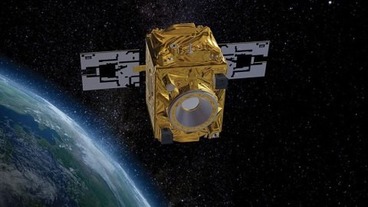
Recently, the final results of the Microscope mission [1, 2] have just been published where record accuracy is shown. Indeed, the principle of equivalence has been proved with an unequaled precision of 10-15. These results demonstrate that bodies fall in a vacuum with the same acceleration regardless of their composition or thei
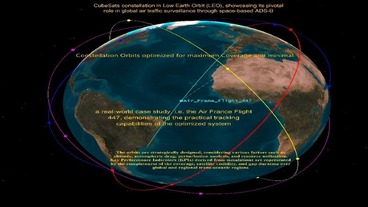
The primary technique used for air traffic surveillance is radar. However, nowadays, its role in surveillance is gradually being replaced by the recently adopted Automatic Dependent Surveillance-Broadcast (ADS-B). ADS-B offers a higher accuracy, lower power consumption, and longer range than radar, thus providing more safety to
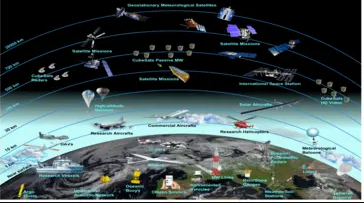
Although water is abundant in many parts of the Earth’s environment, concerns about water security are increasing due to its critical role in human well-being, economic growth, social equity, and biodiversity. The ownership and management of water resources are complex because water is regarded as part of the global commons a

Vegetation green leaf phenology directly impacts gross primary productivity (GPP) of terrestrial ecosystems. Satellite observations of land surface phenology (LSP) provide an important means to monitor the key timing of vegetation green leaf development. However, differences between satellite-derived LSP proxies and in situ meas
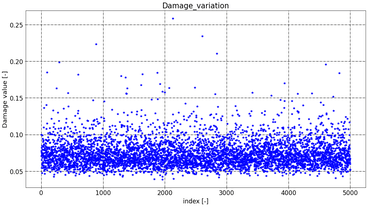
This article focus on developing novel method for vibration damage estimation under combined deterministic and stochastic vibration loading for military application. As the base use Monte Carlo method and Inverse Fast Fourier Transformation (IFFT) for creation times series from the Power Spectra Density (PSD) Response function �
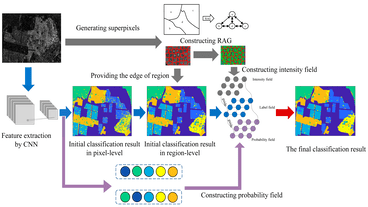
Urban areas are experiencing rapid growth in several areas all over the world. Monitoring short-term changes are very important for urban change analysis and planning. Synthetic aperture radar (SAR) satellite imagery is suitable for such purposes because it is not affected by weather or daylight conditions. However, analyzing SA

